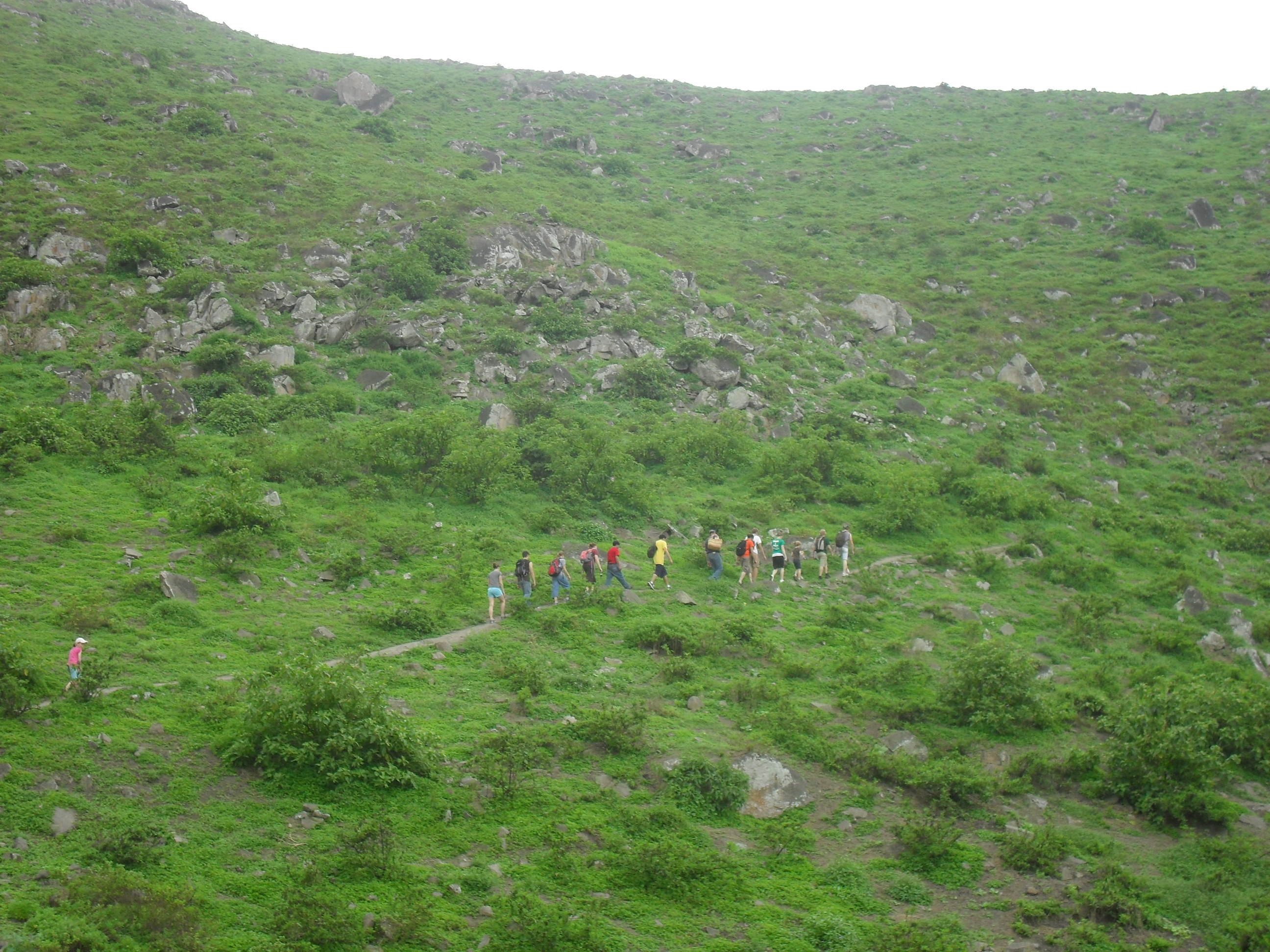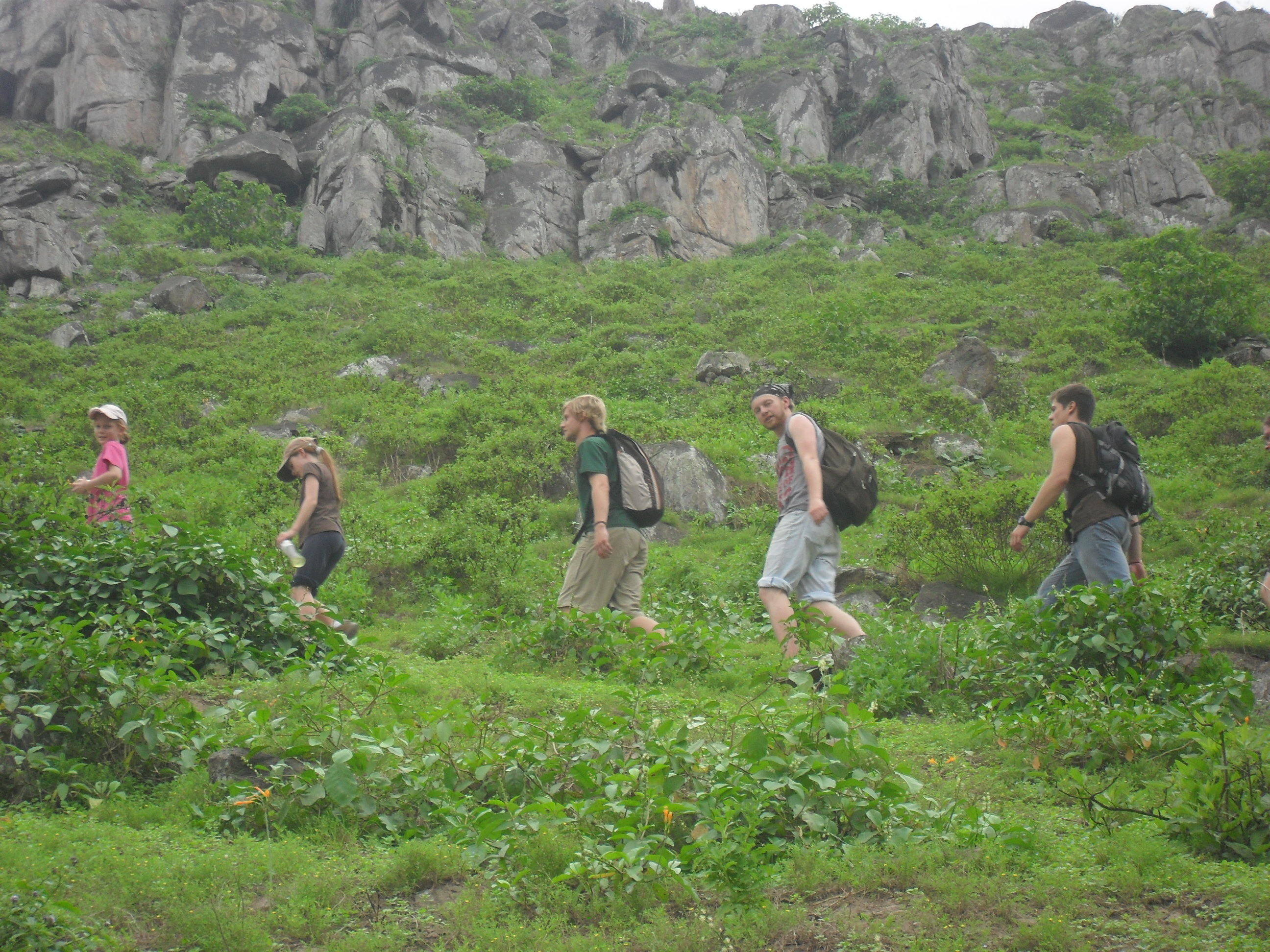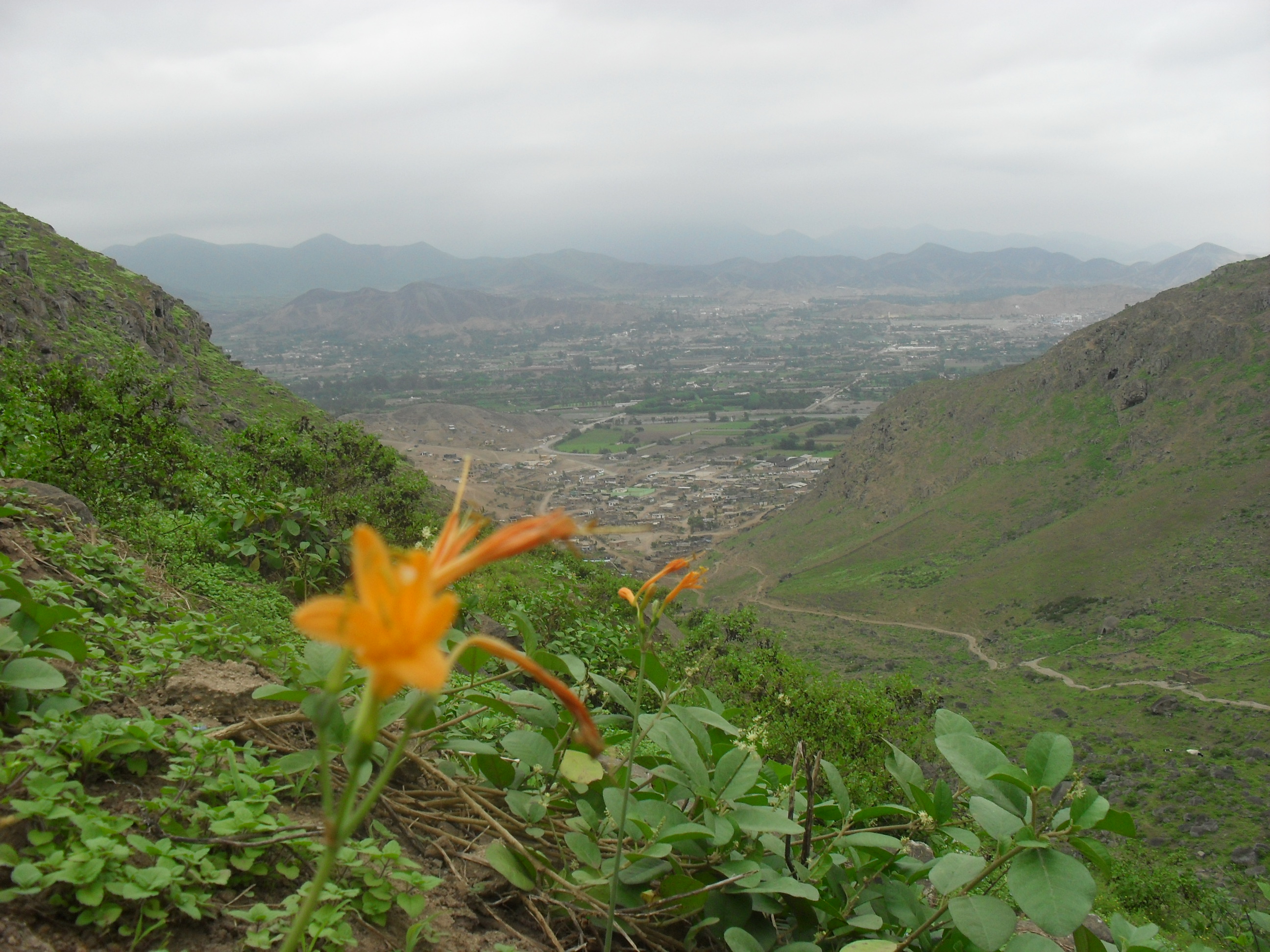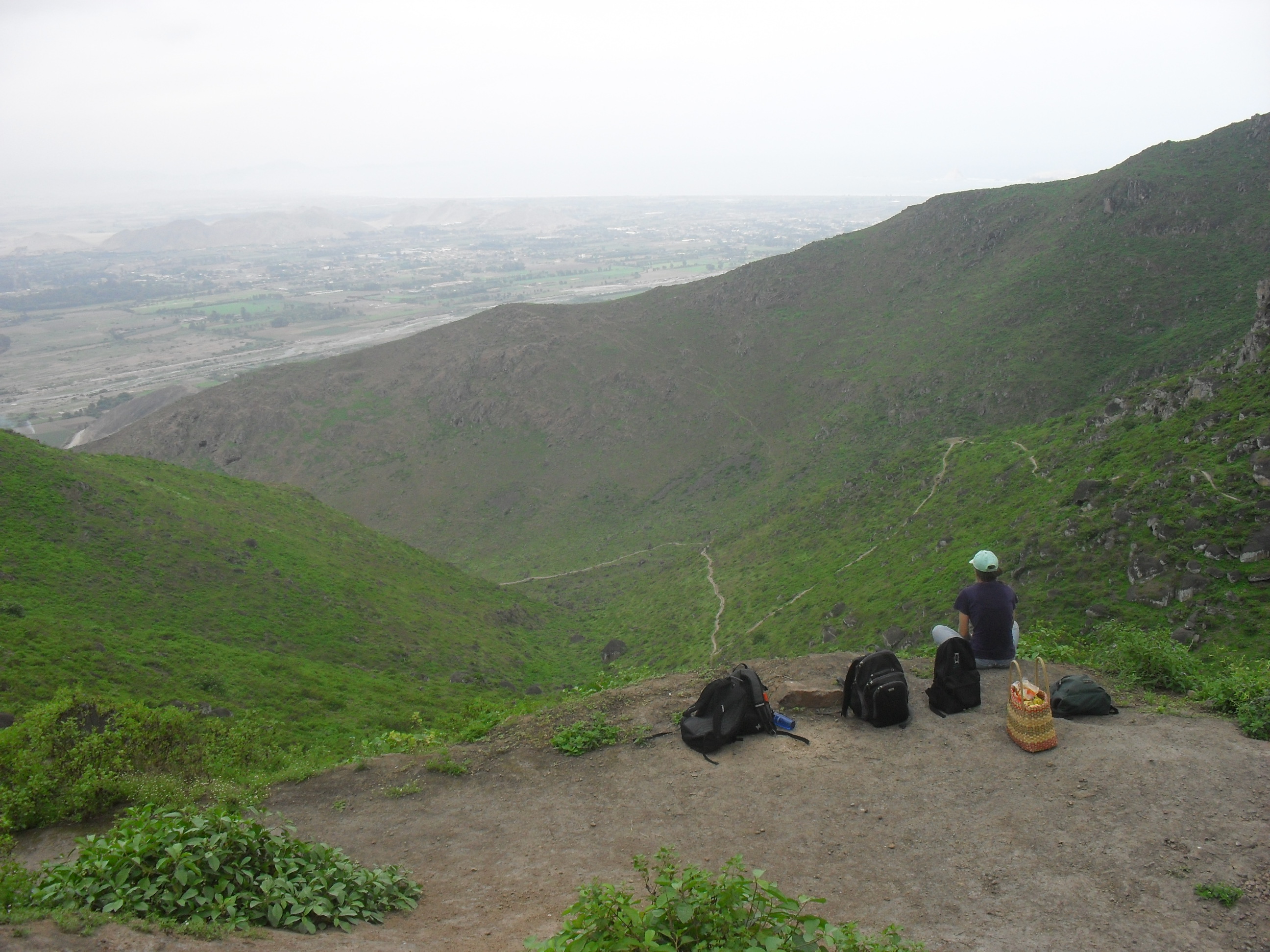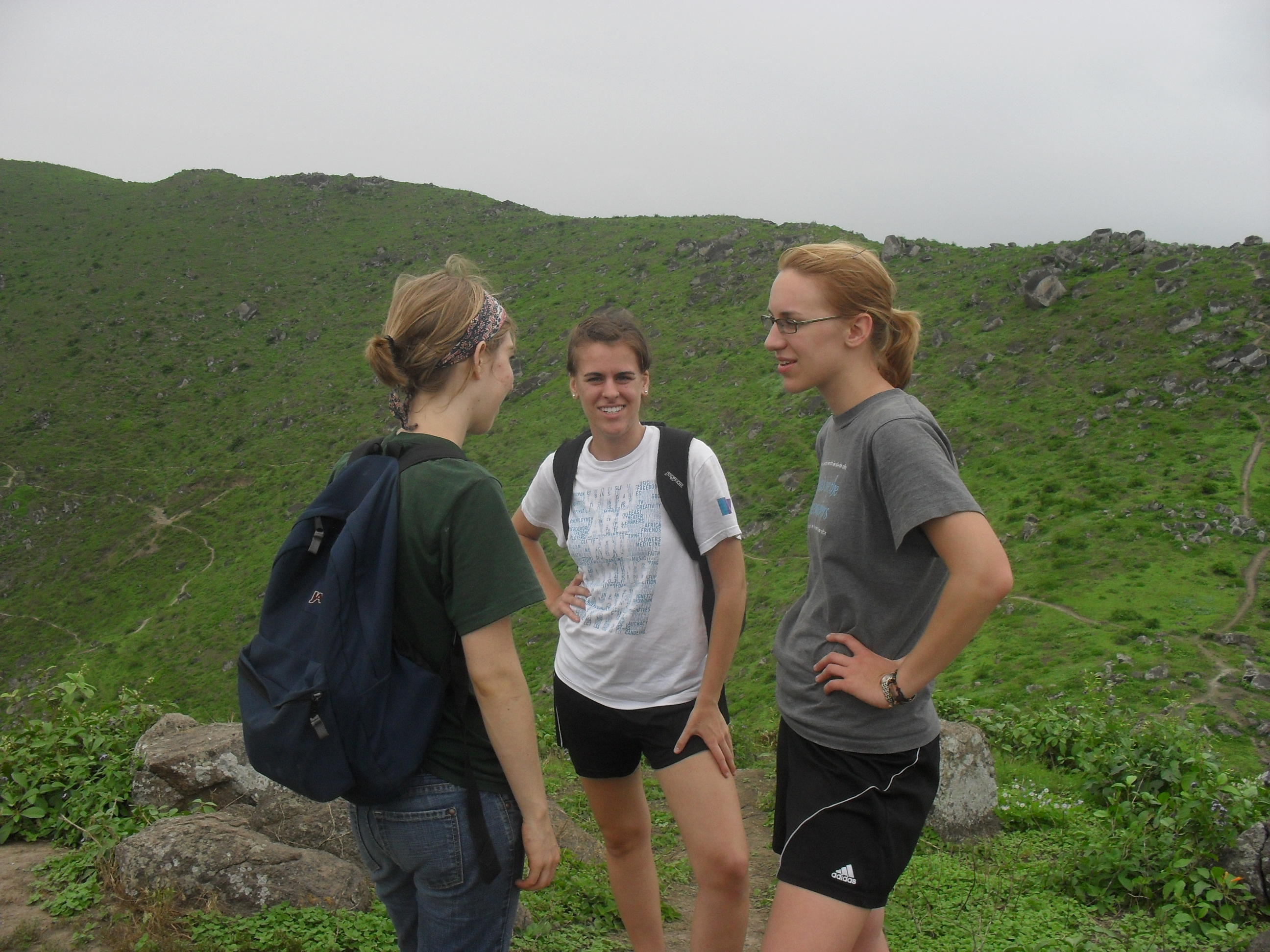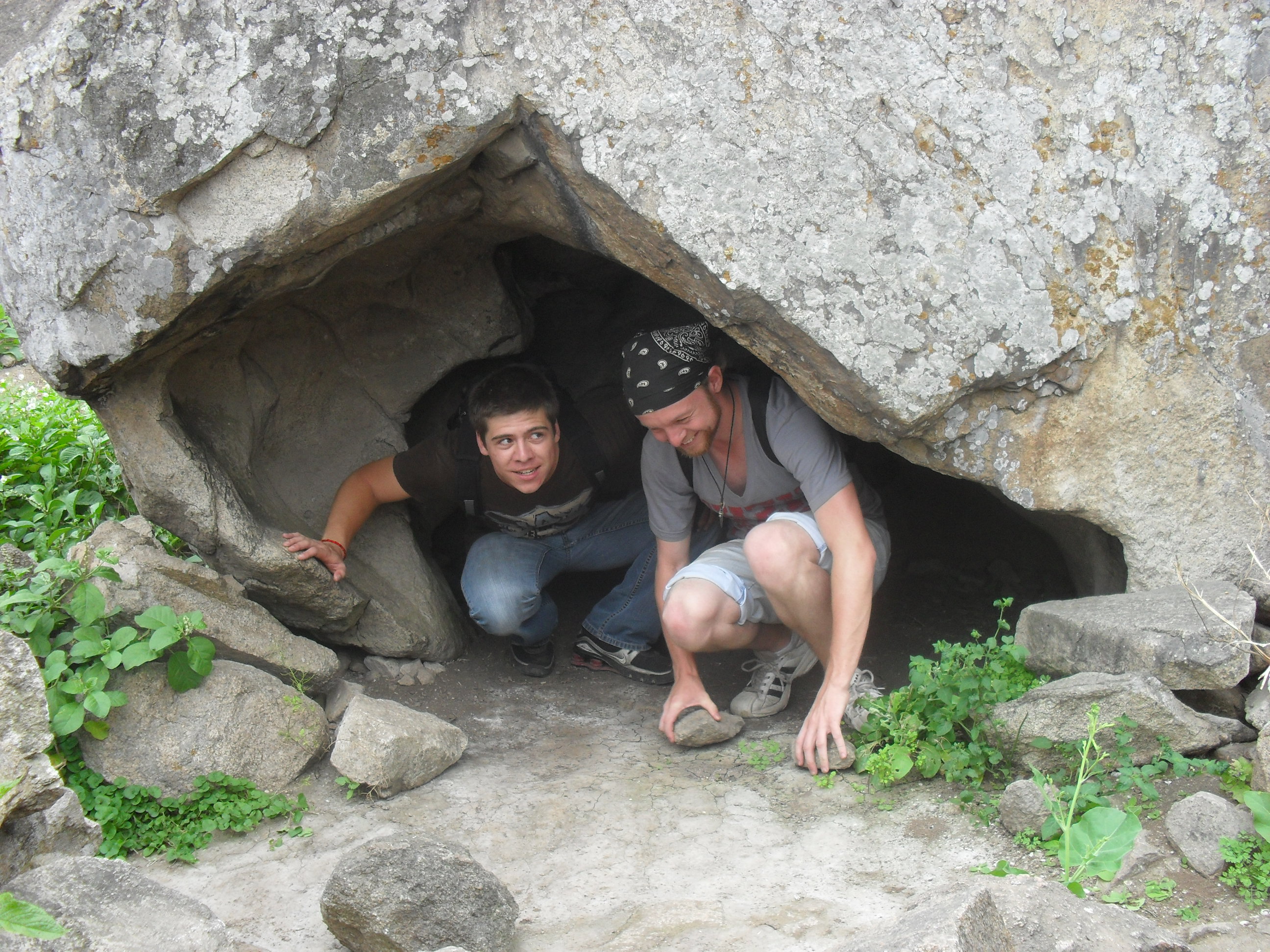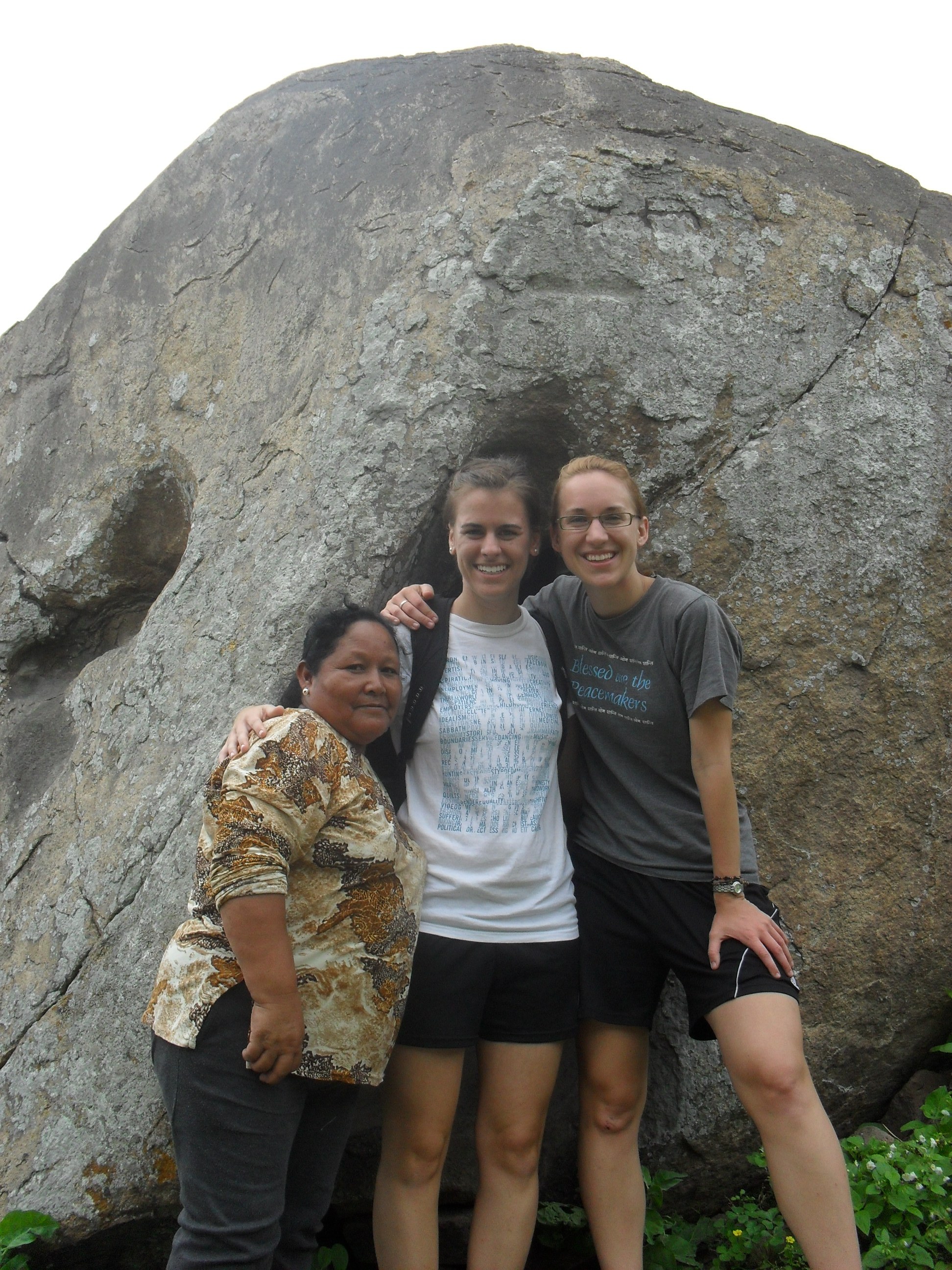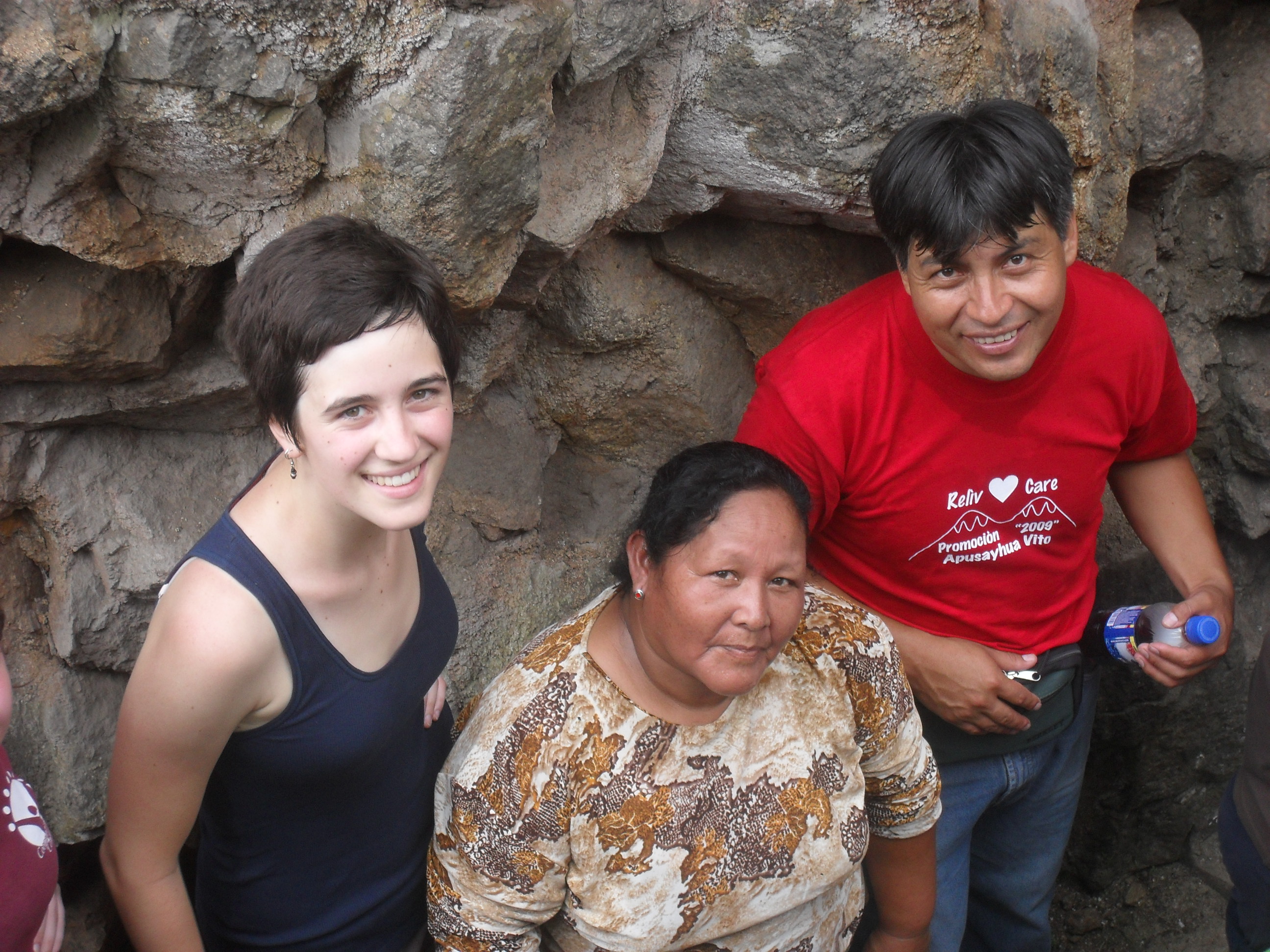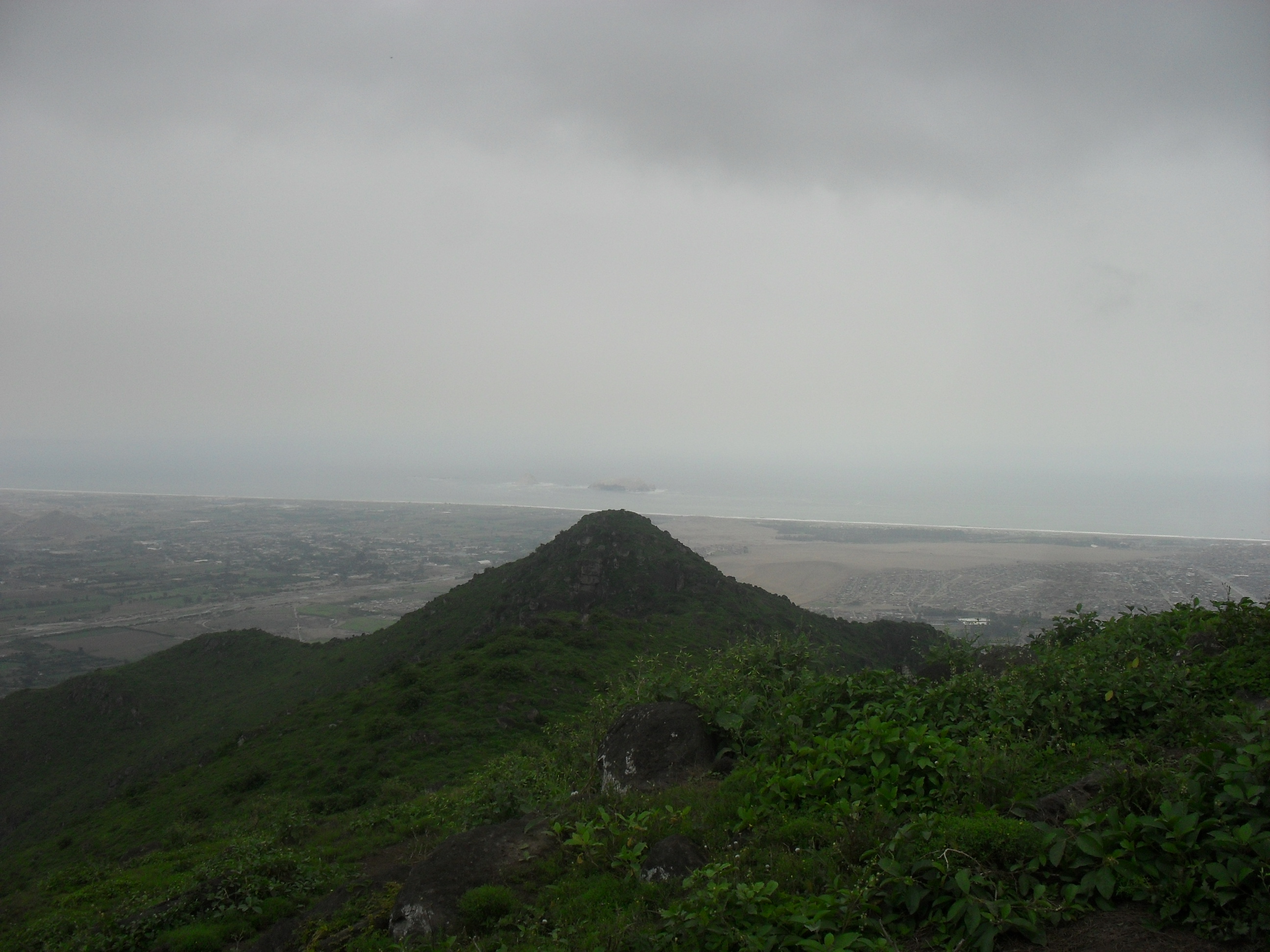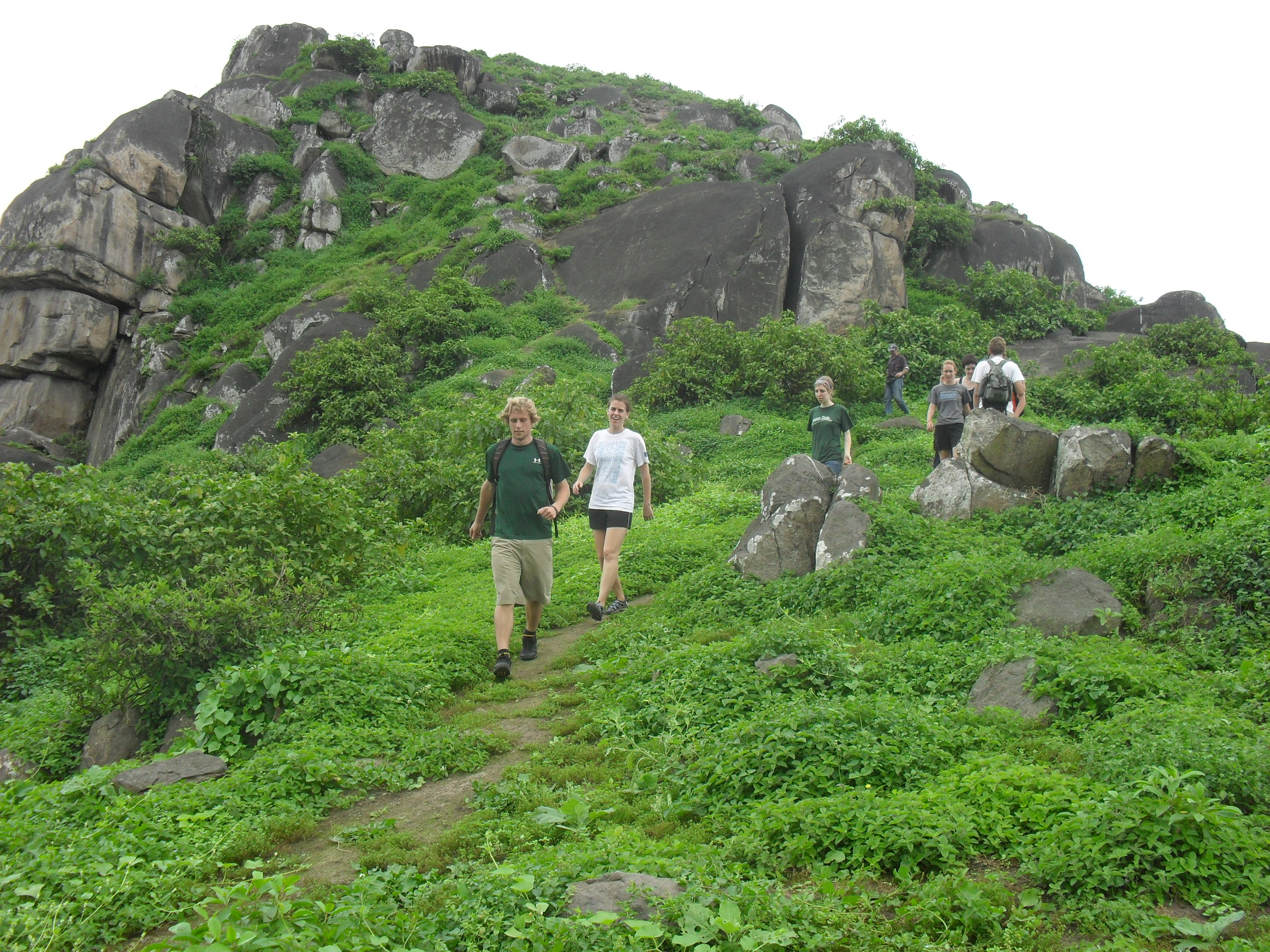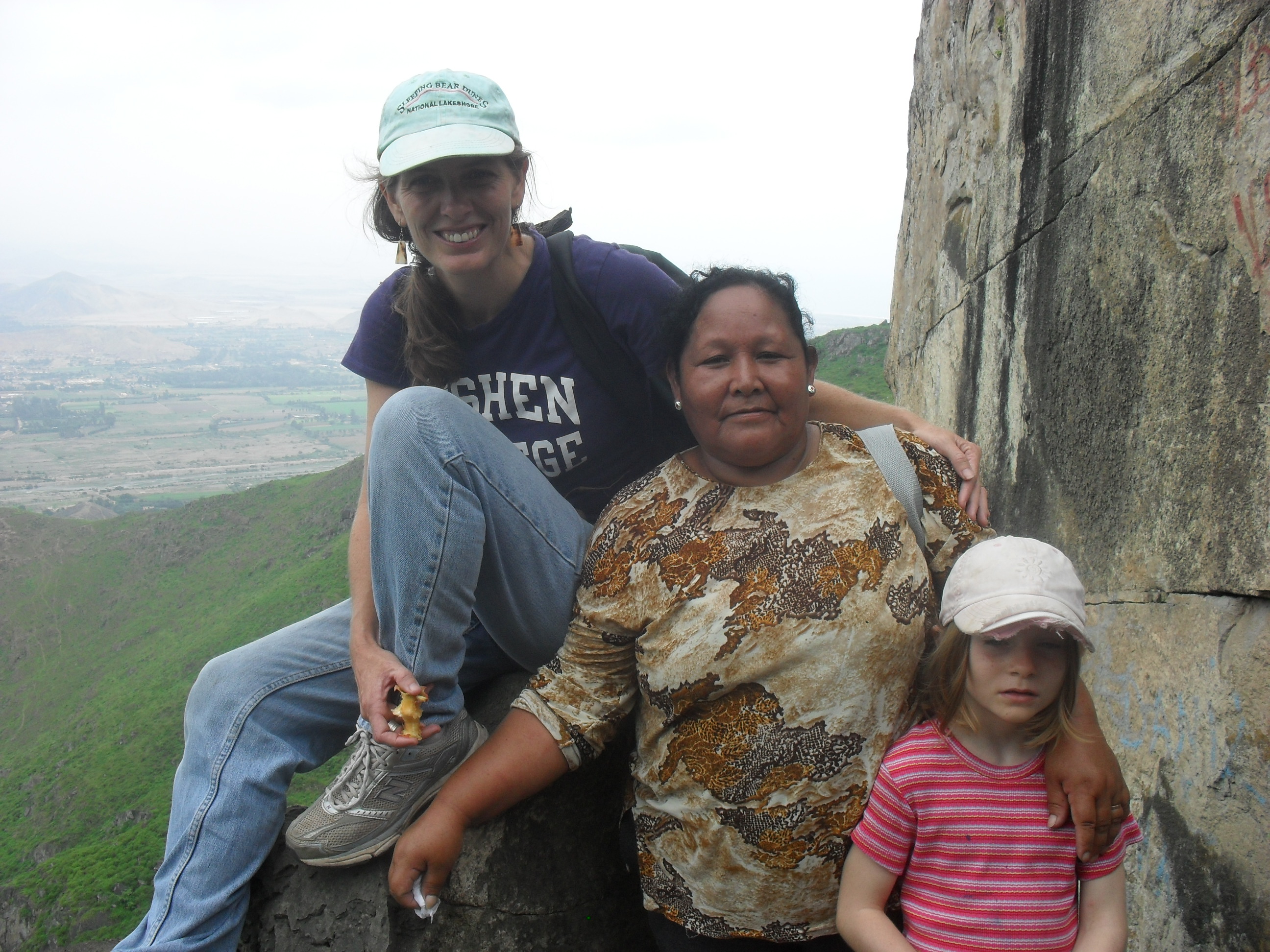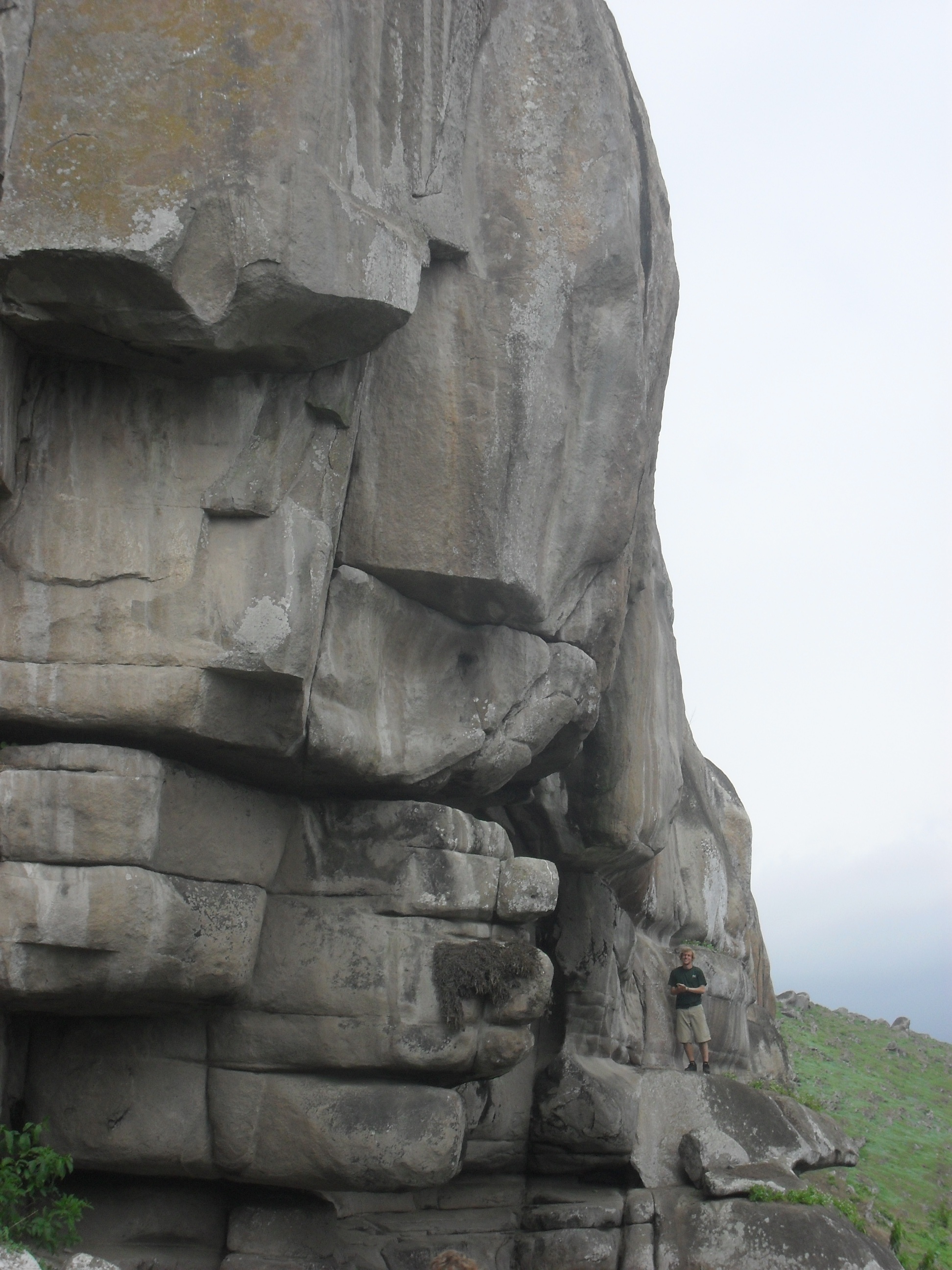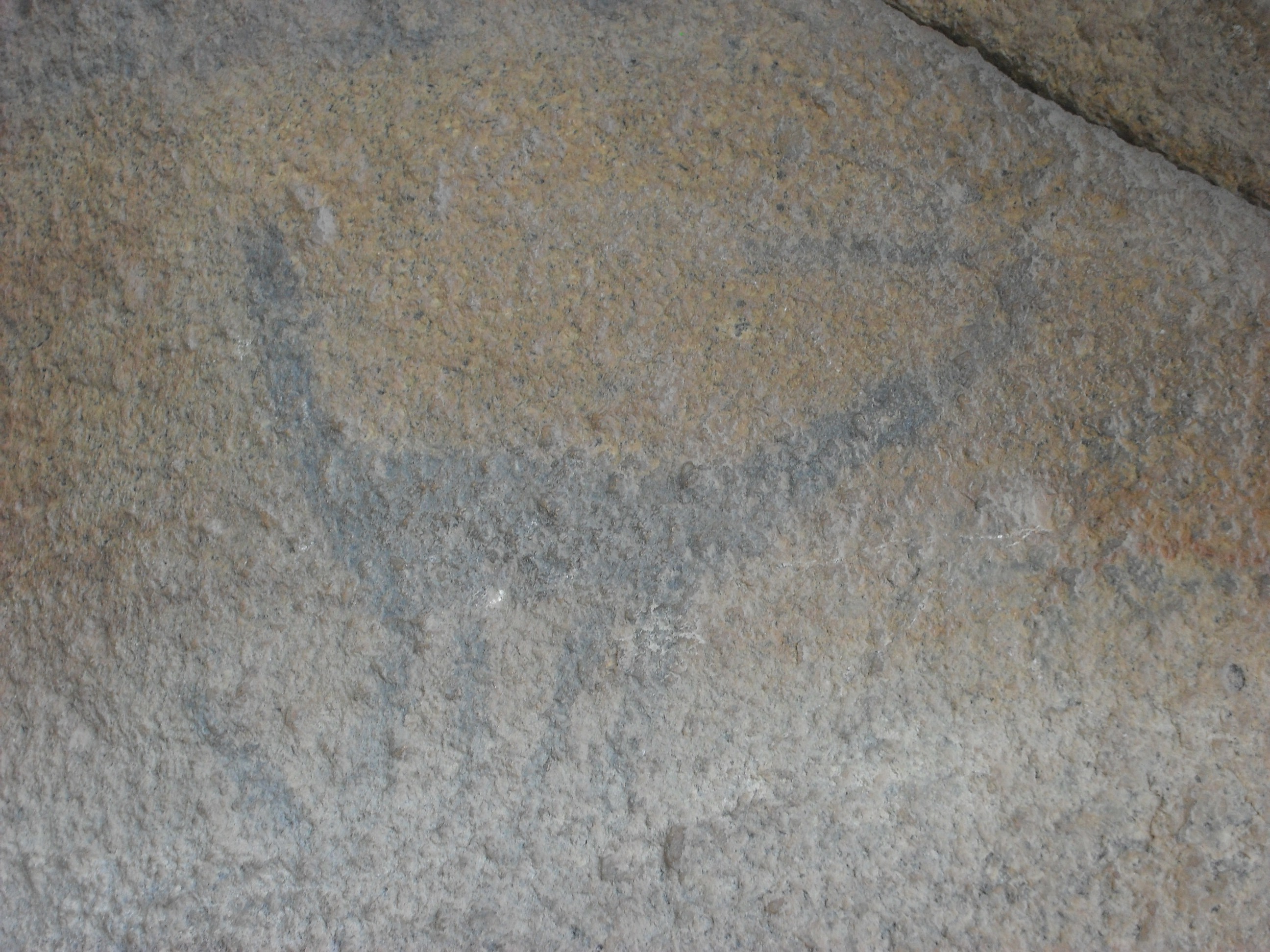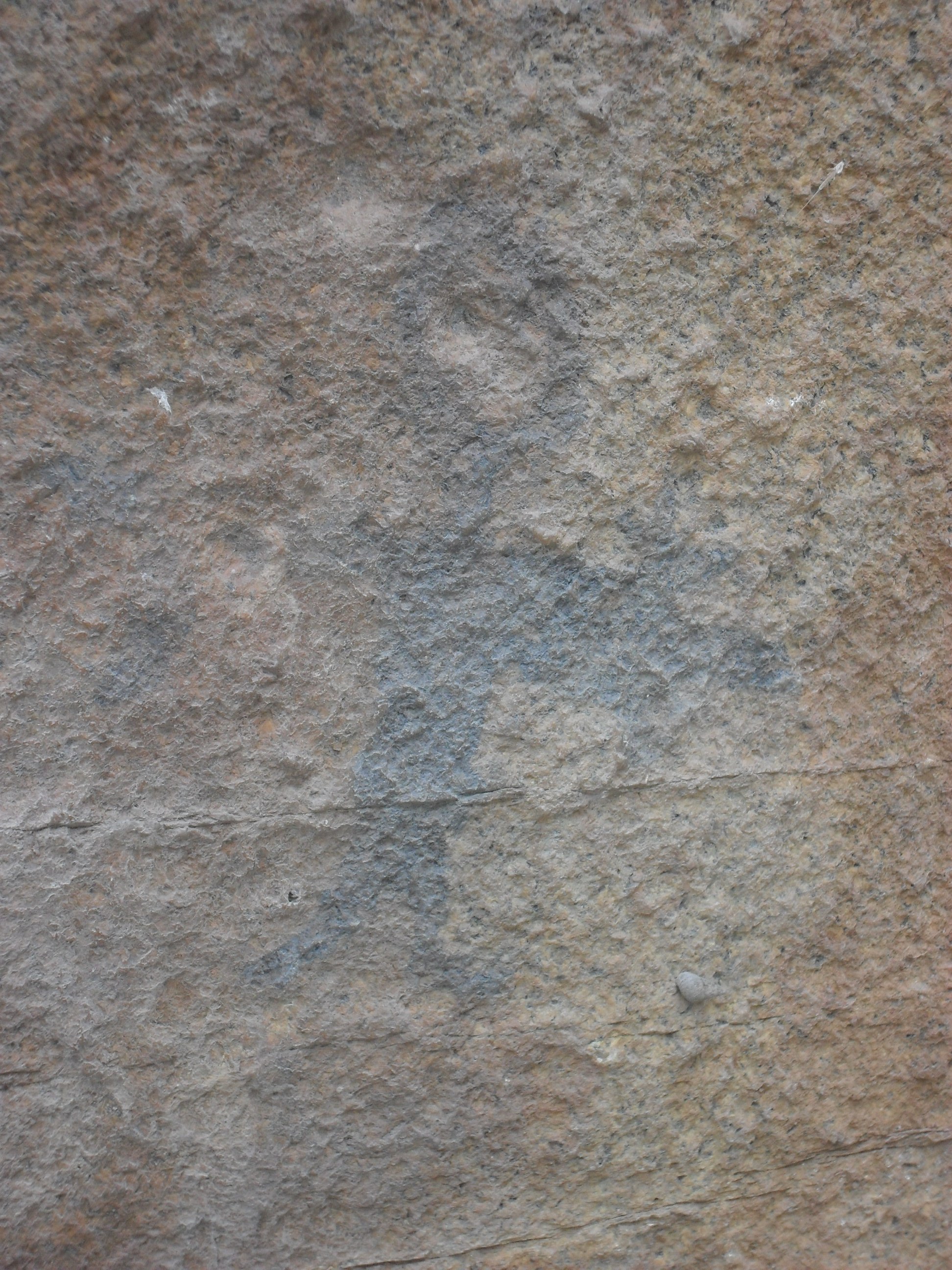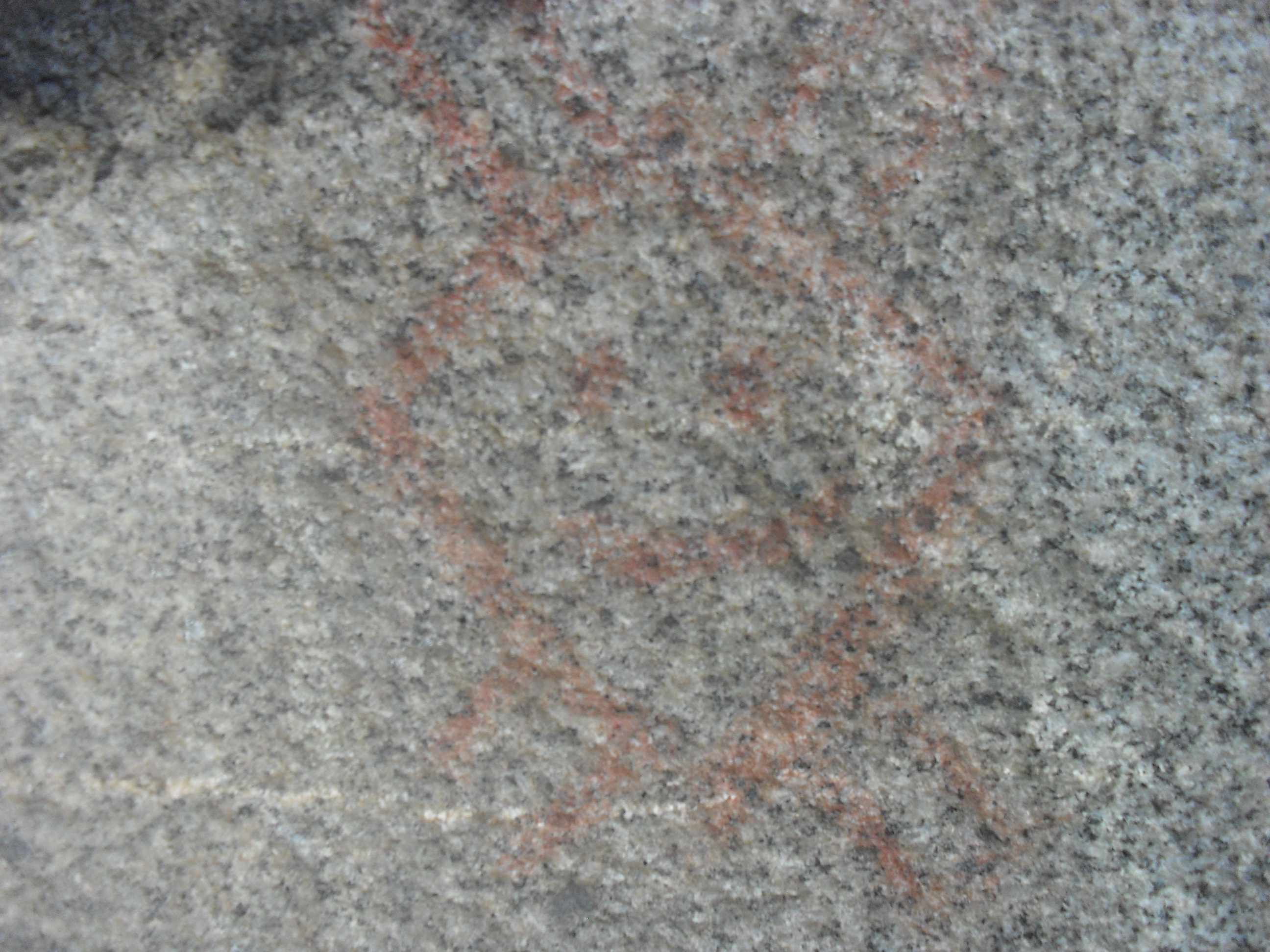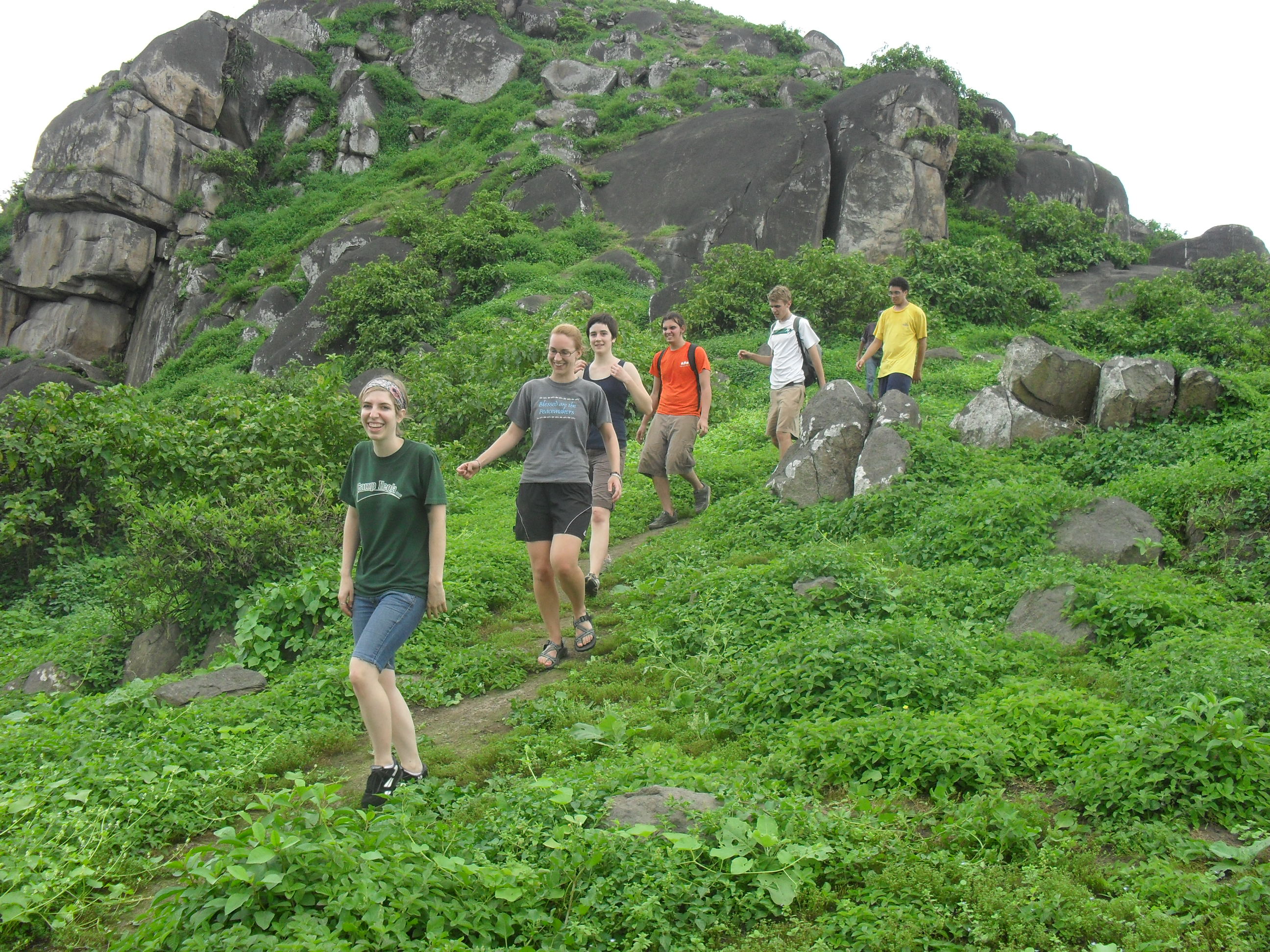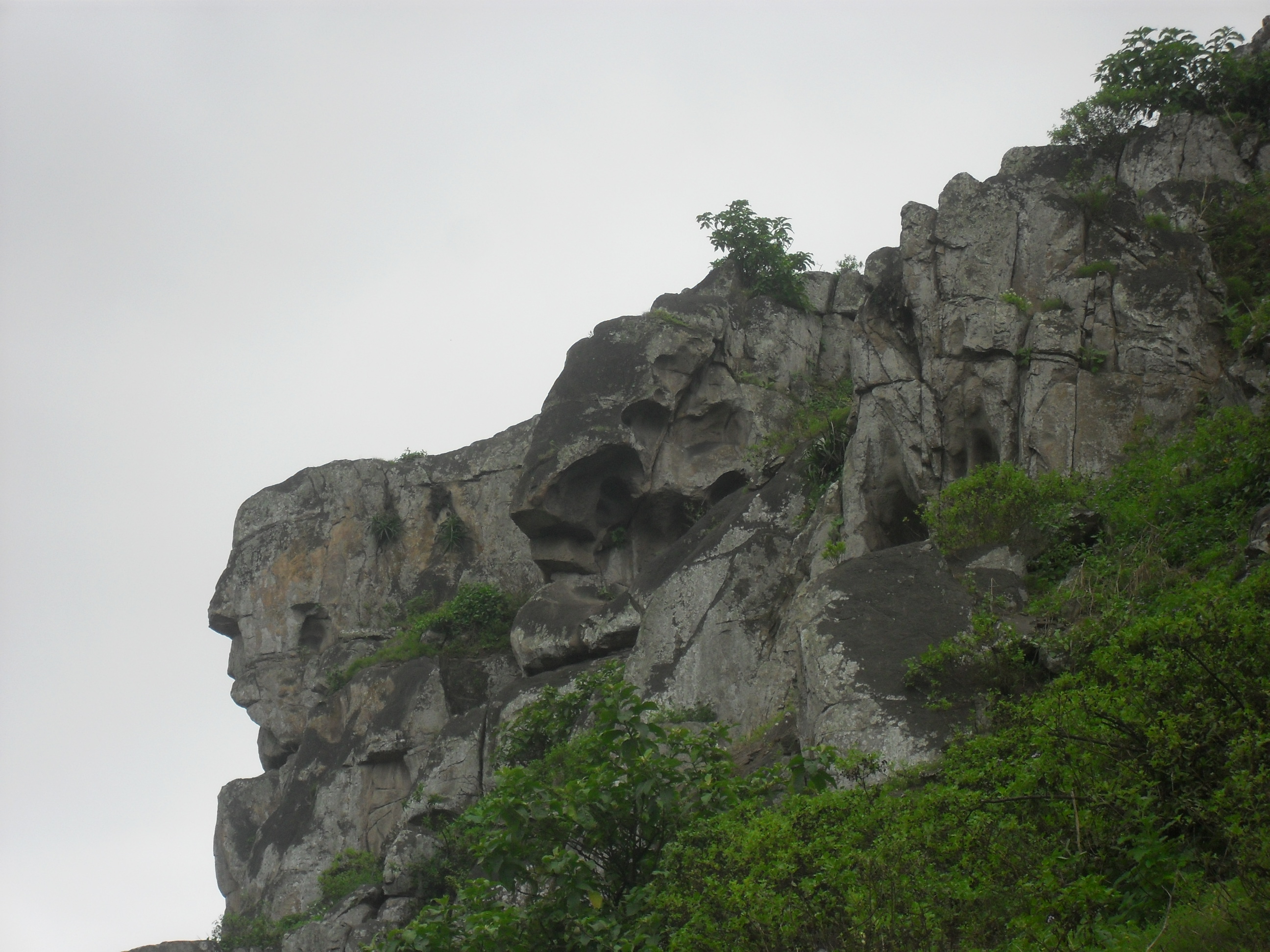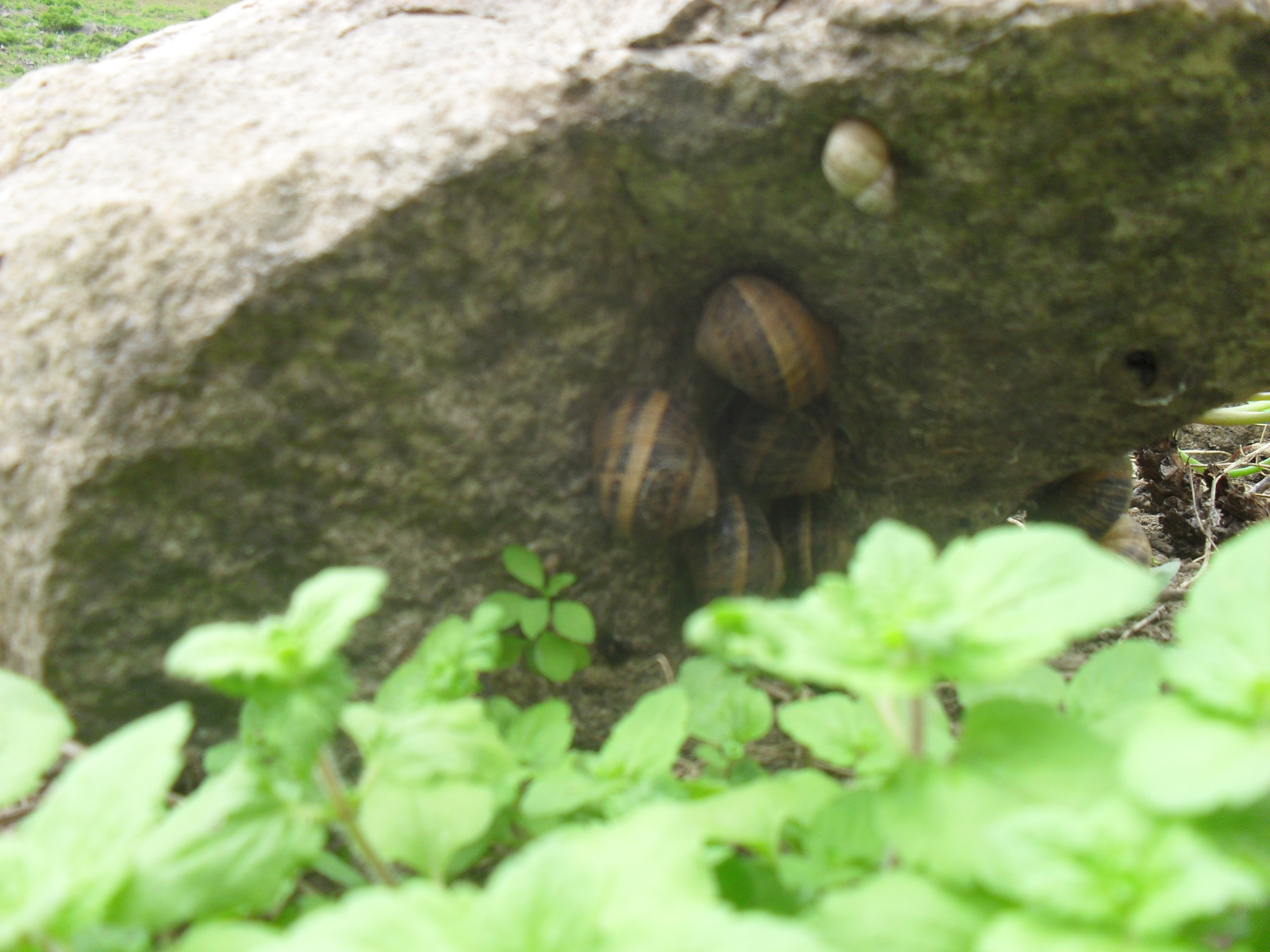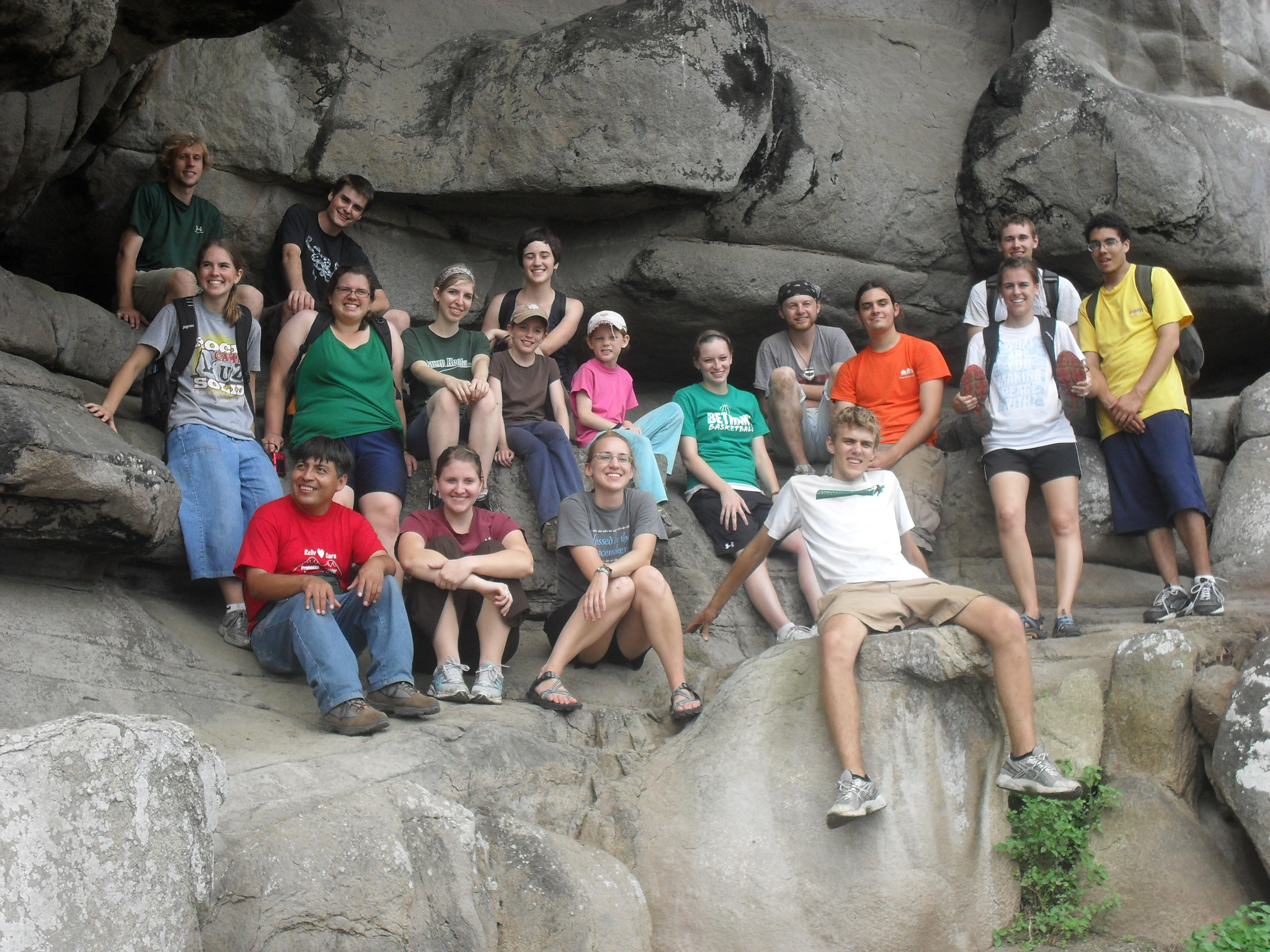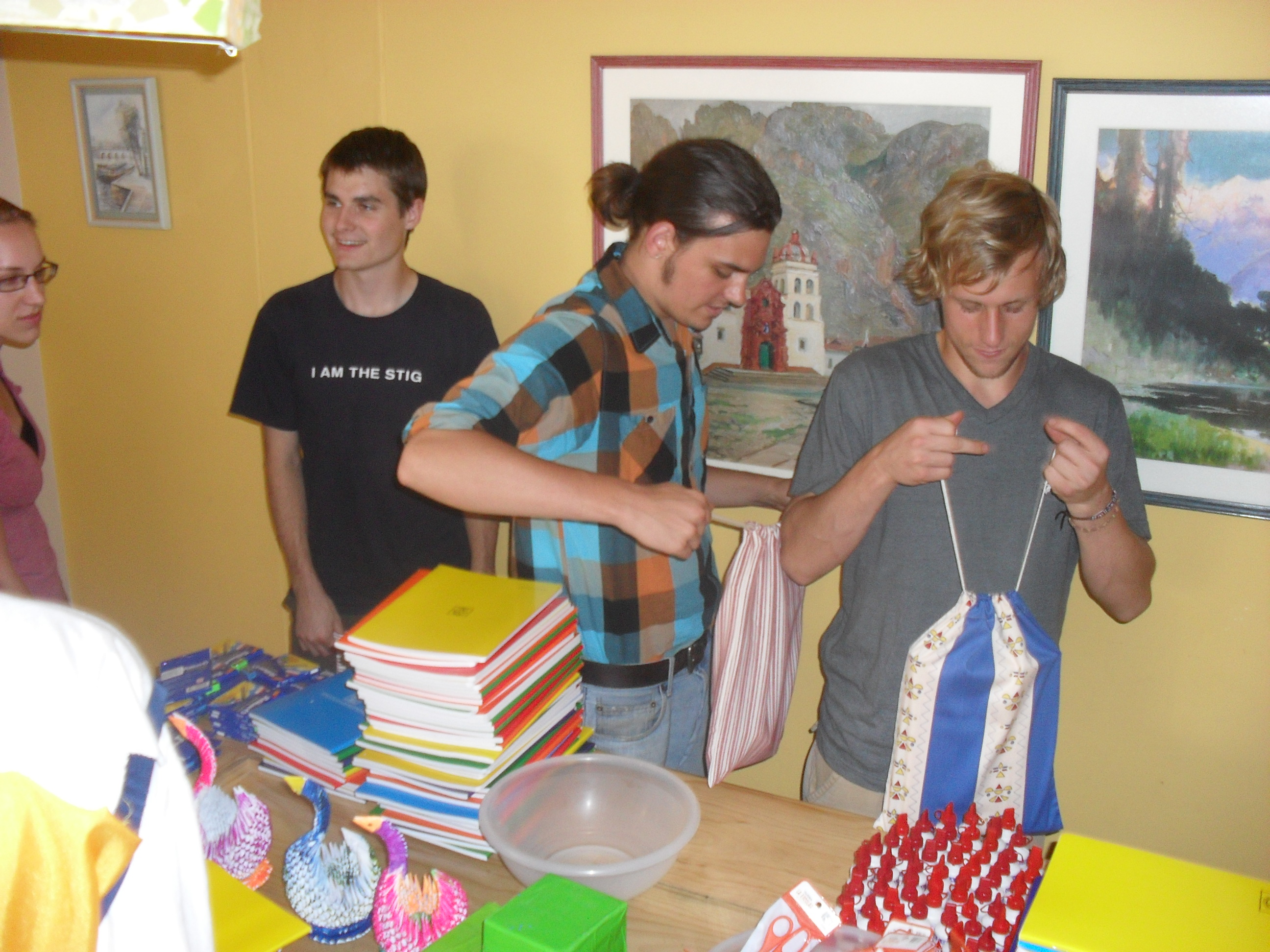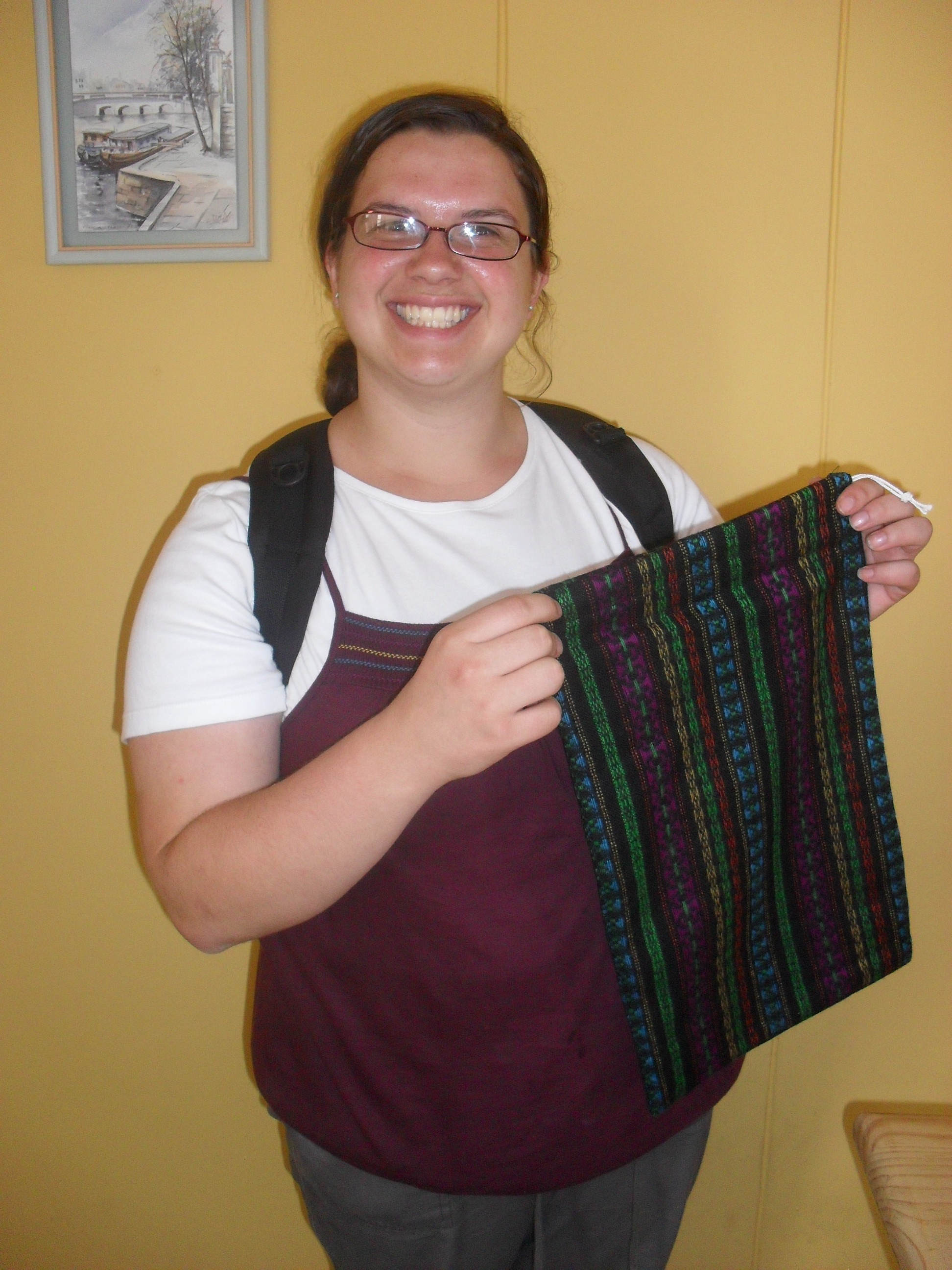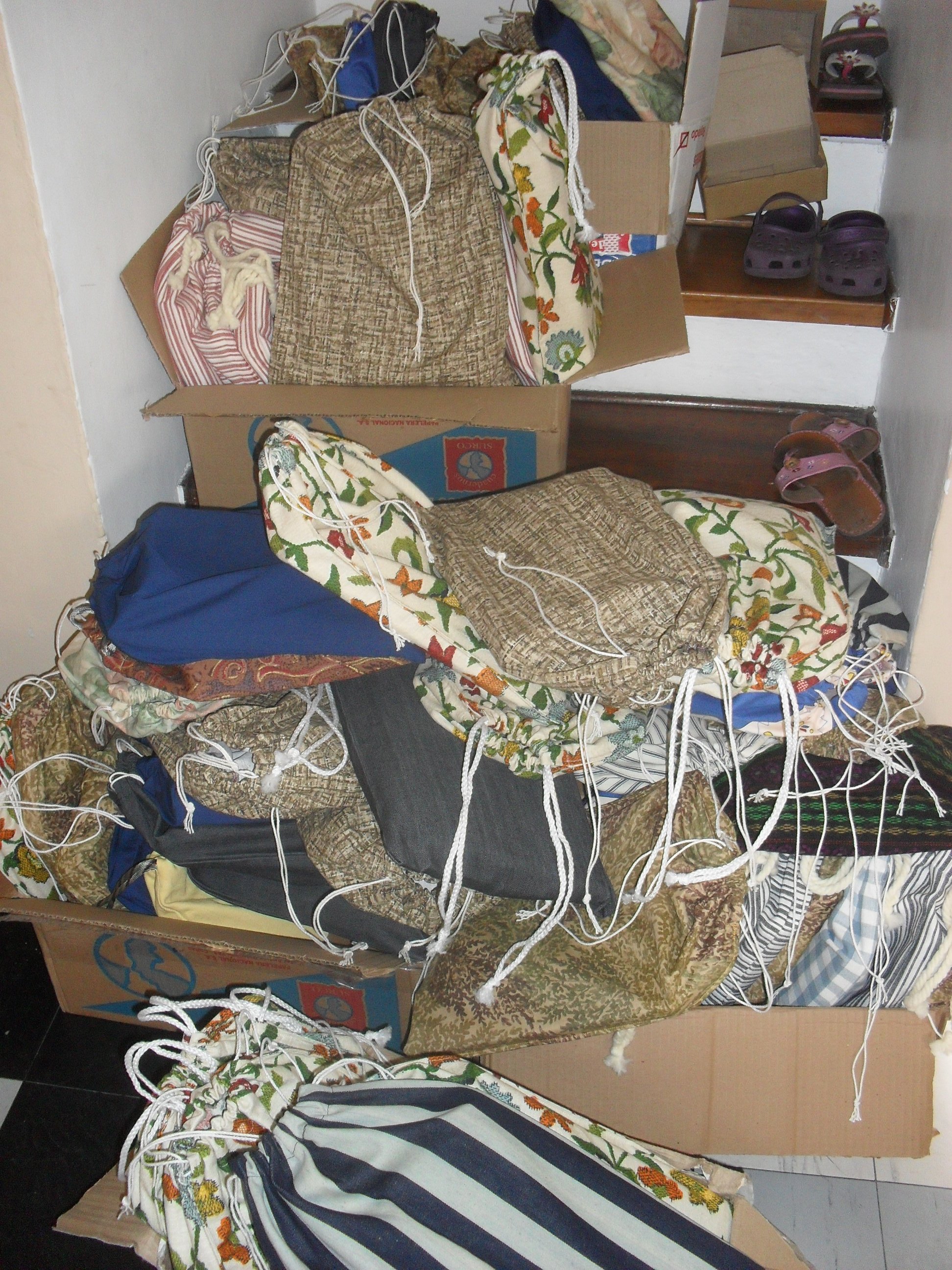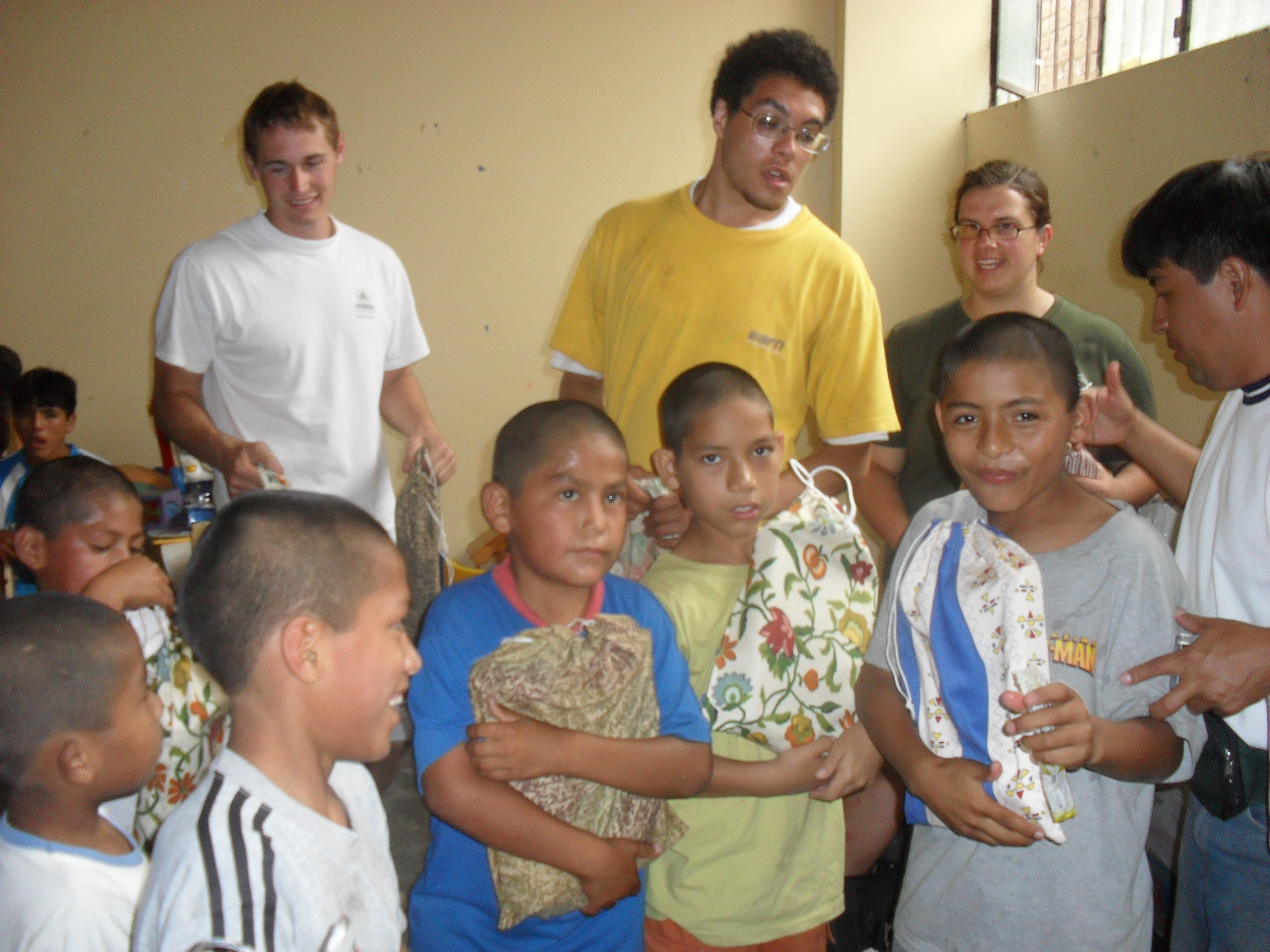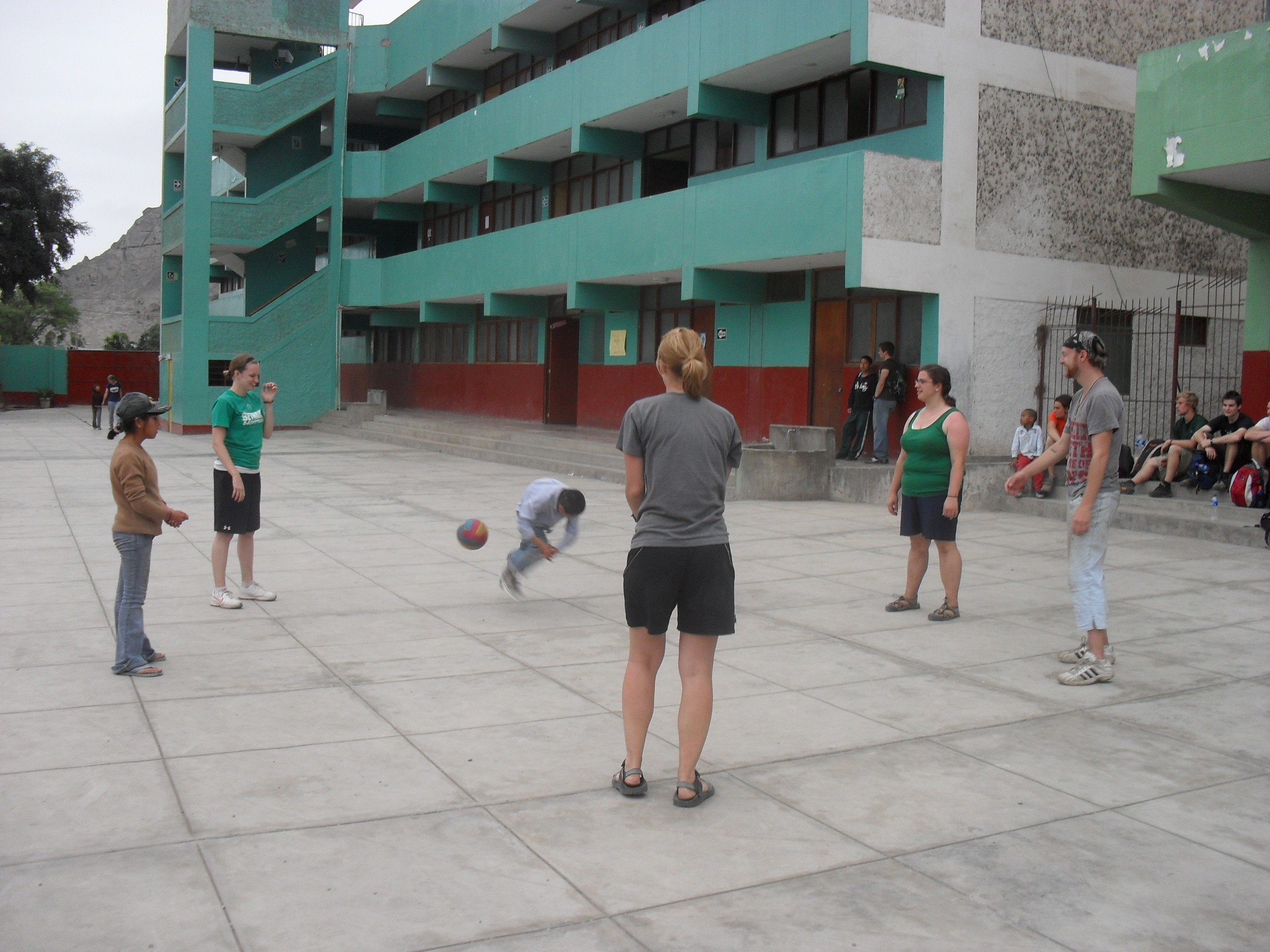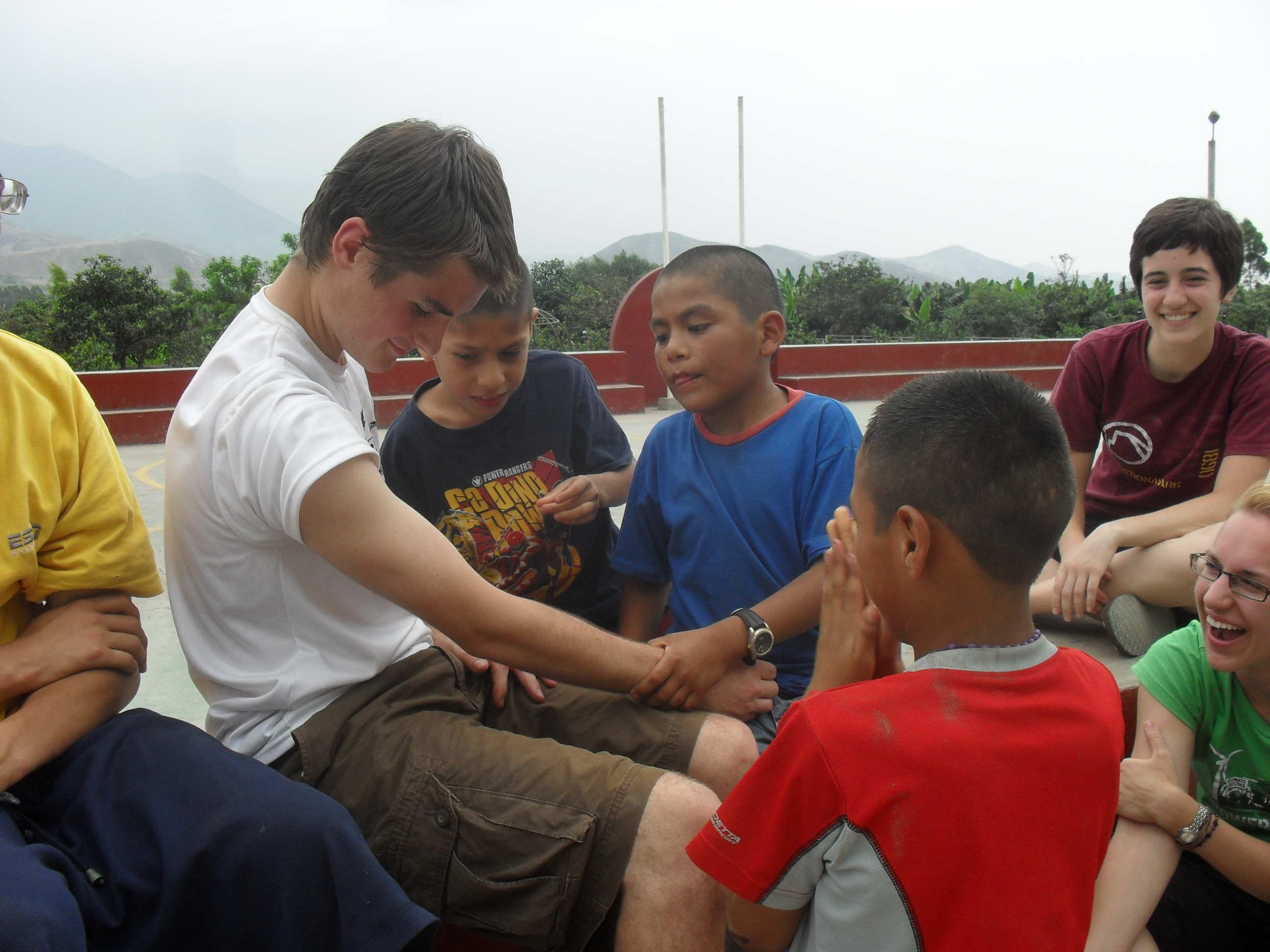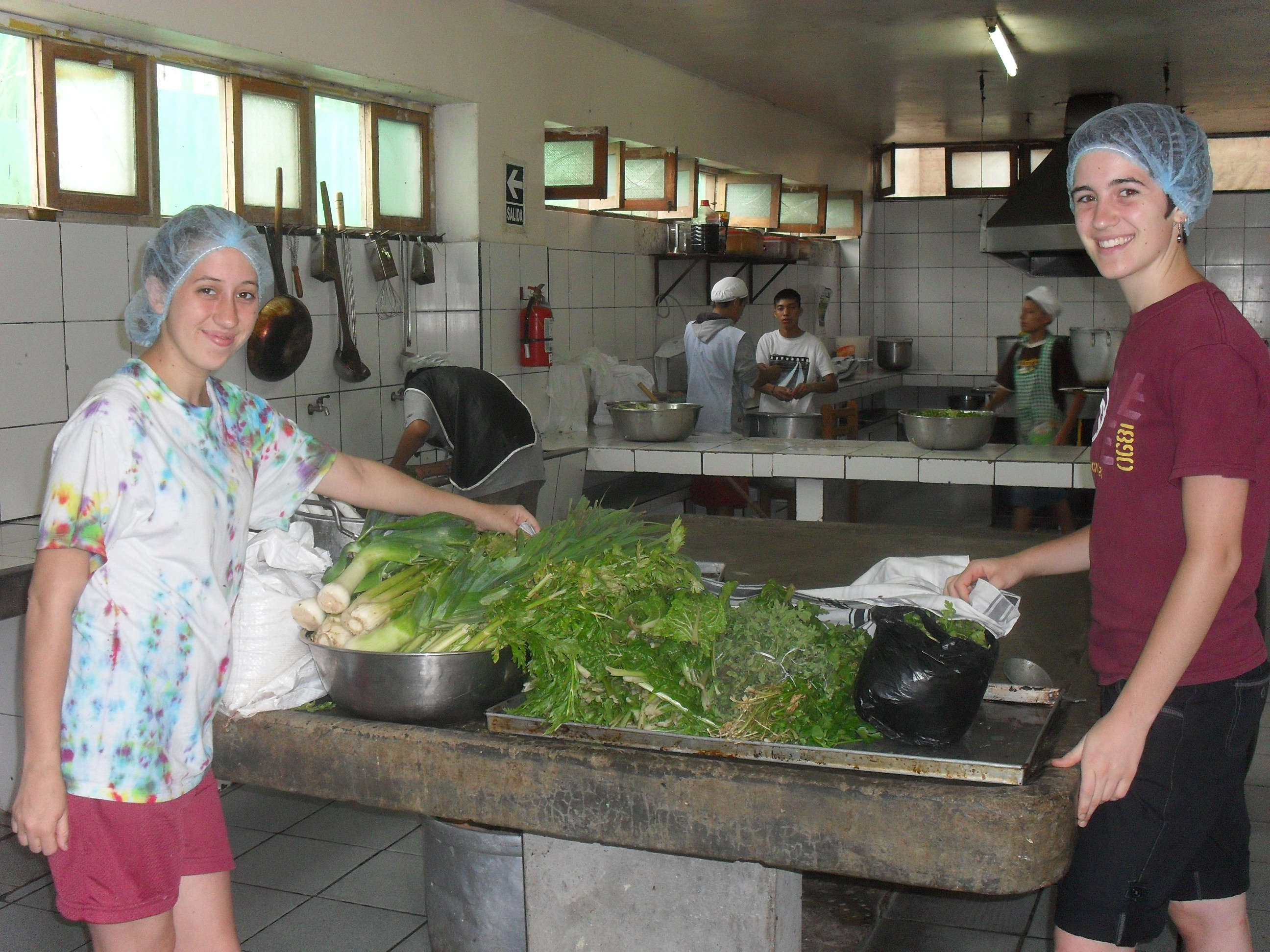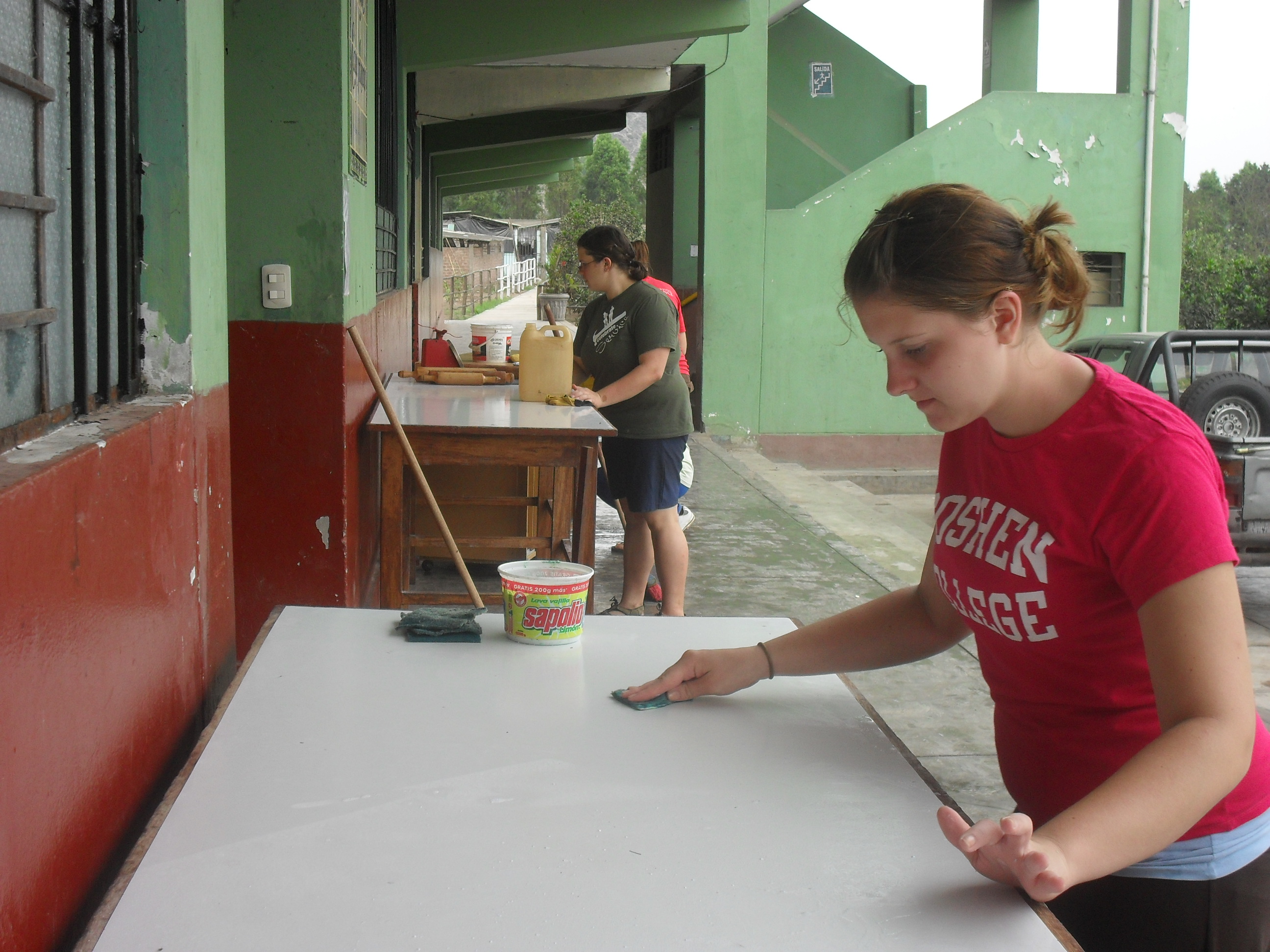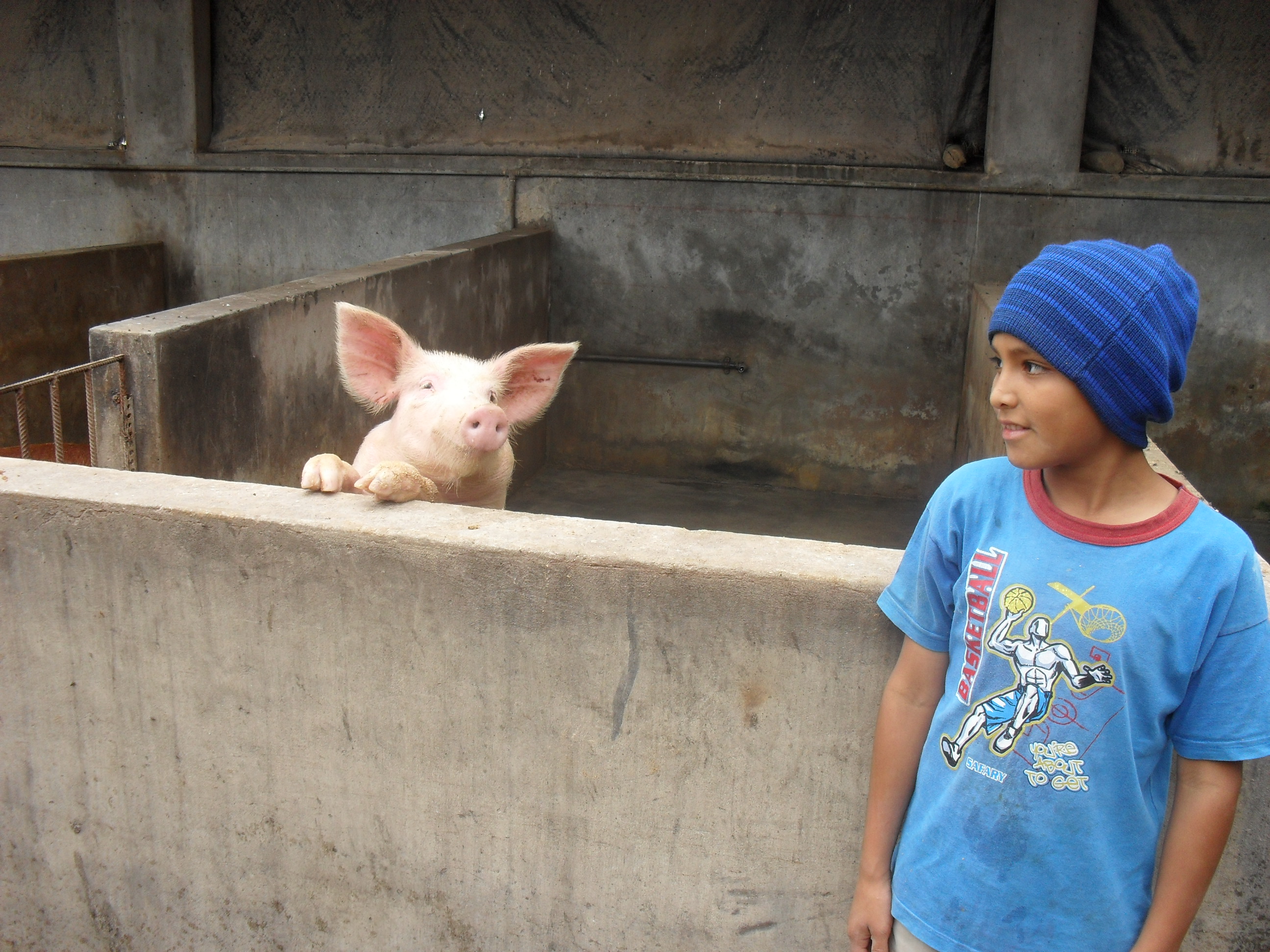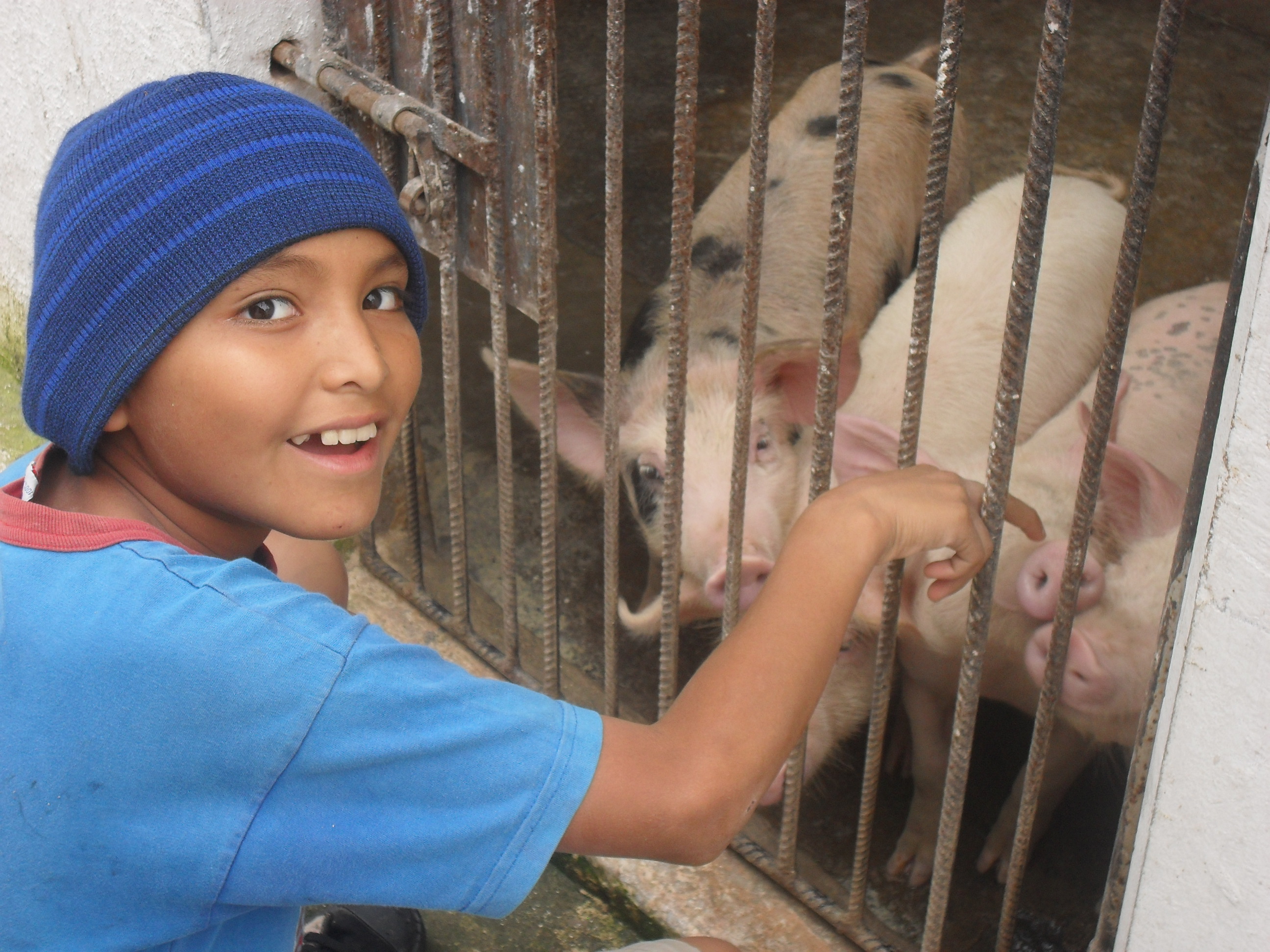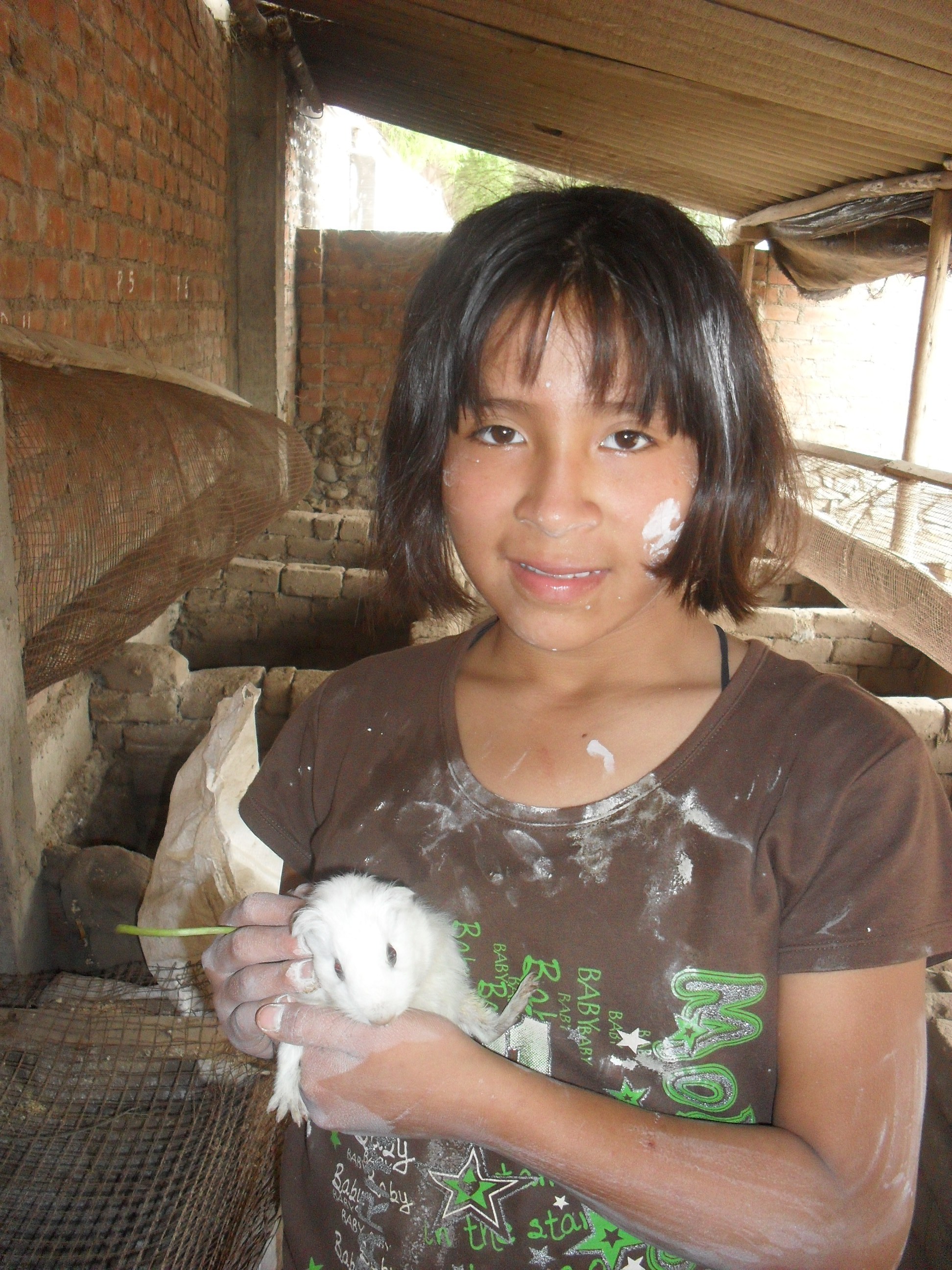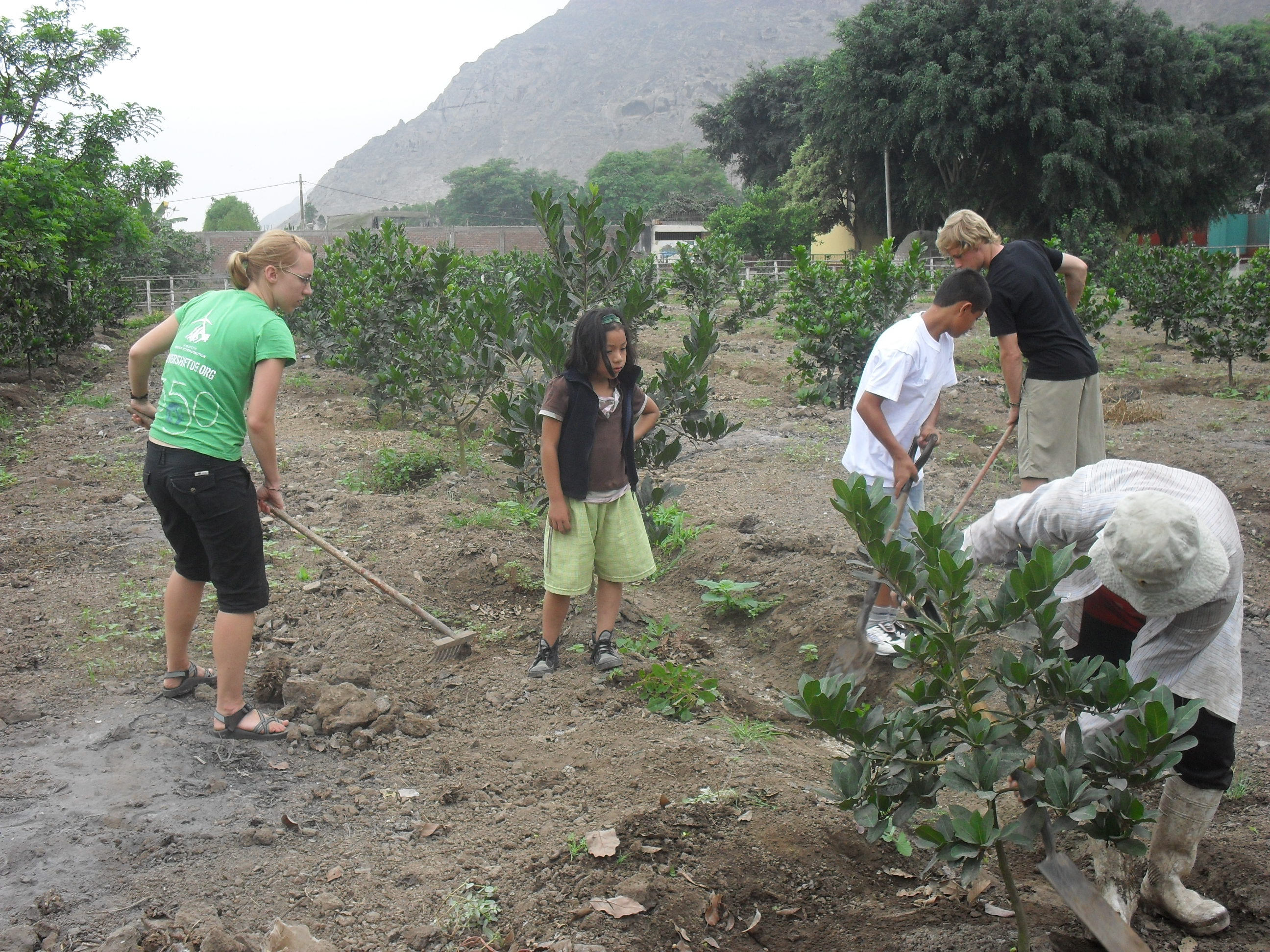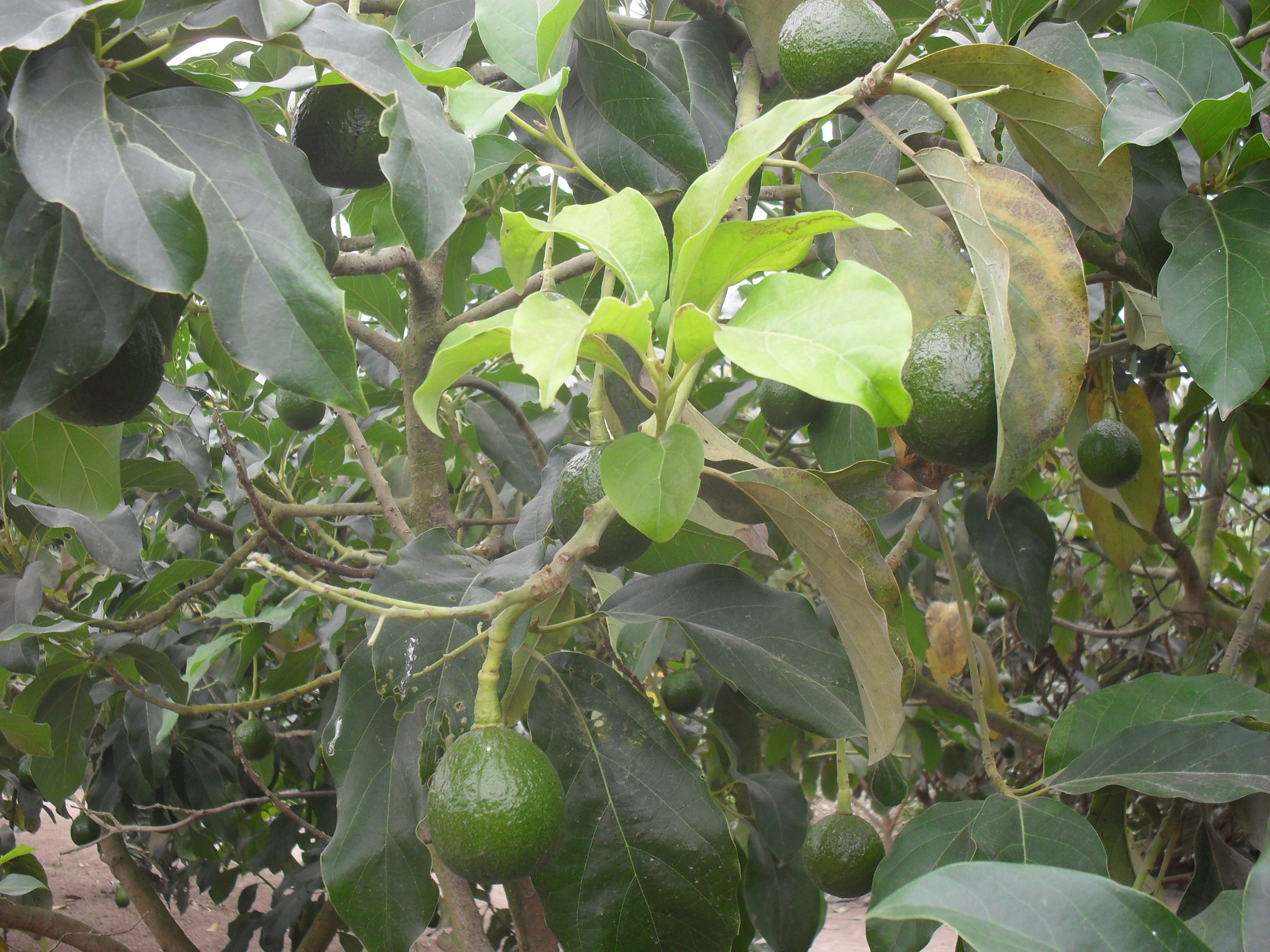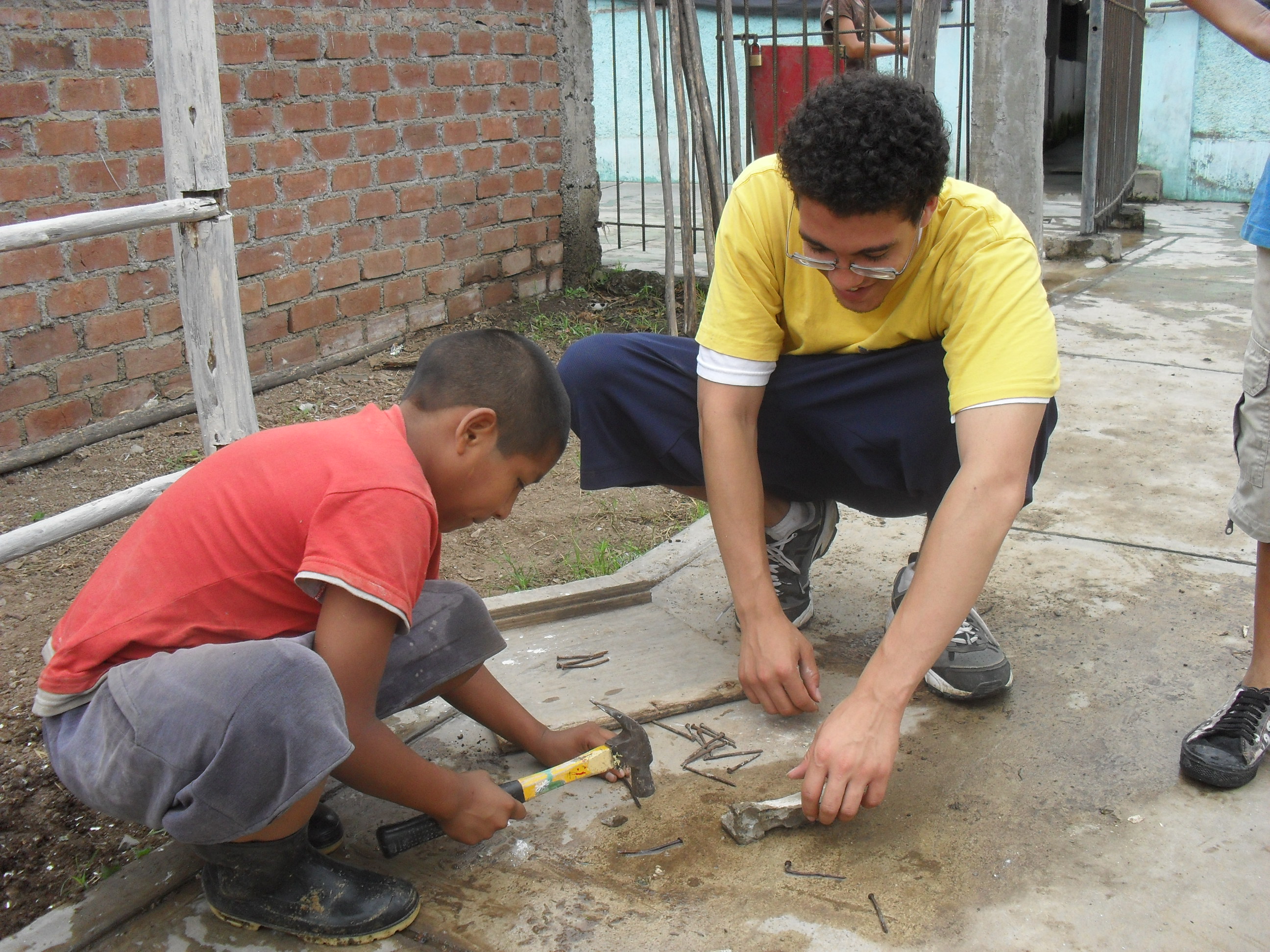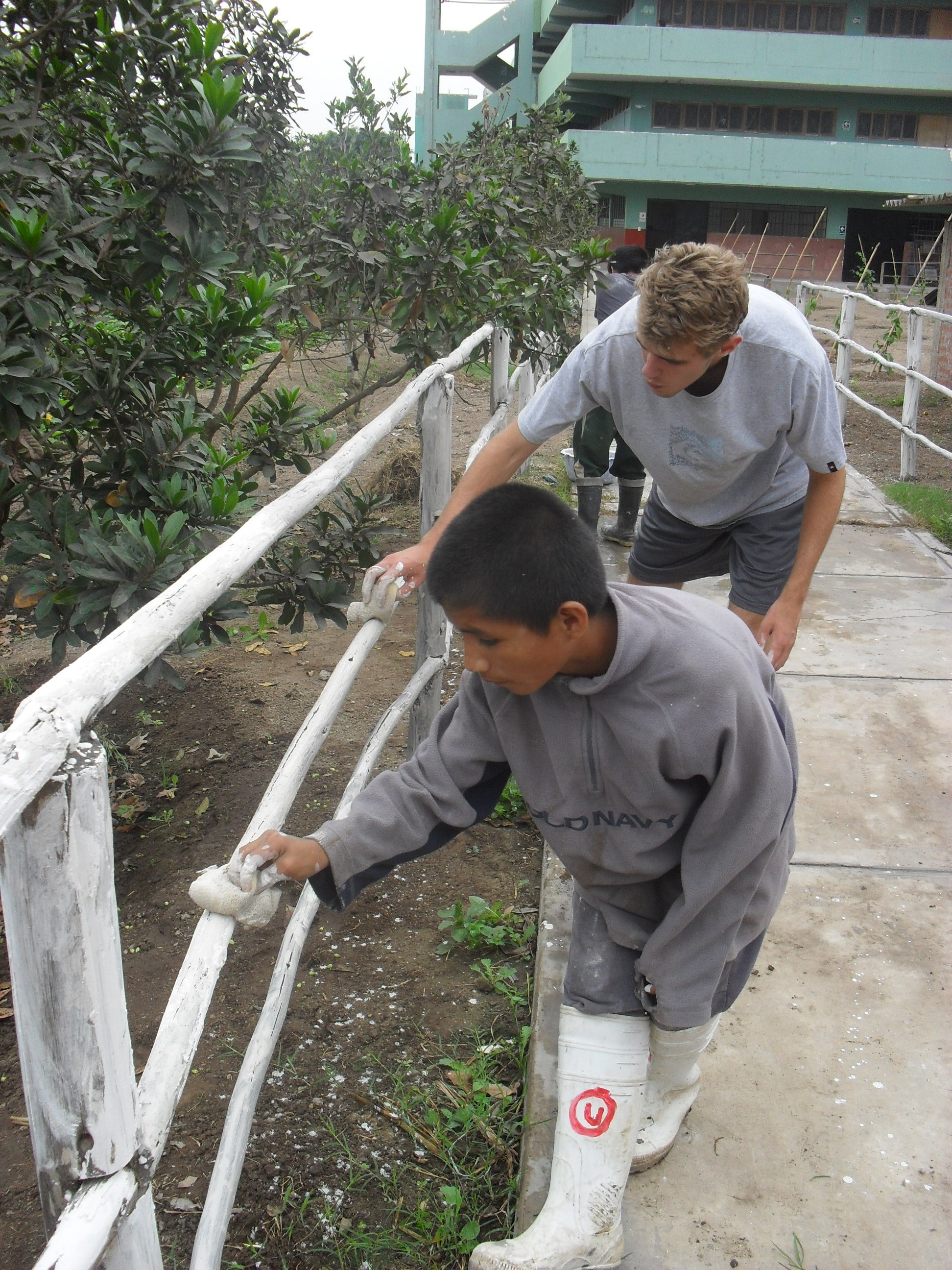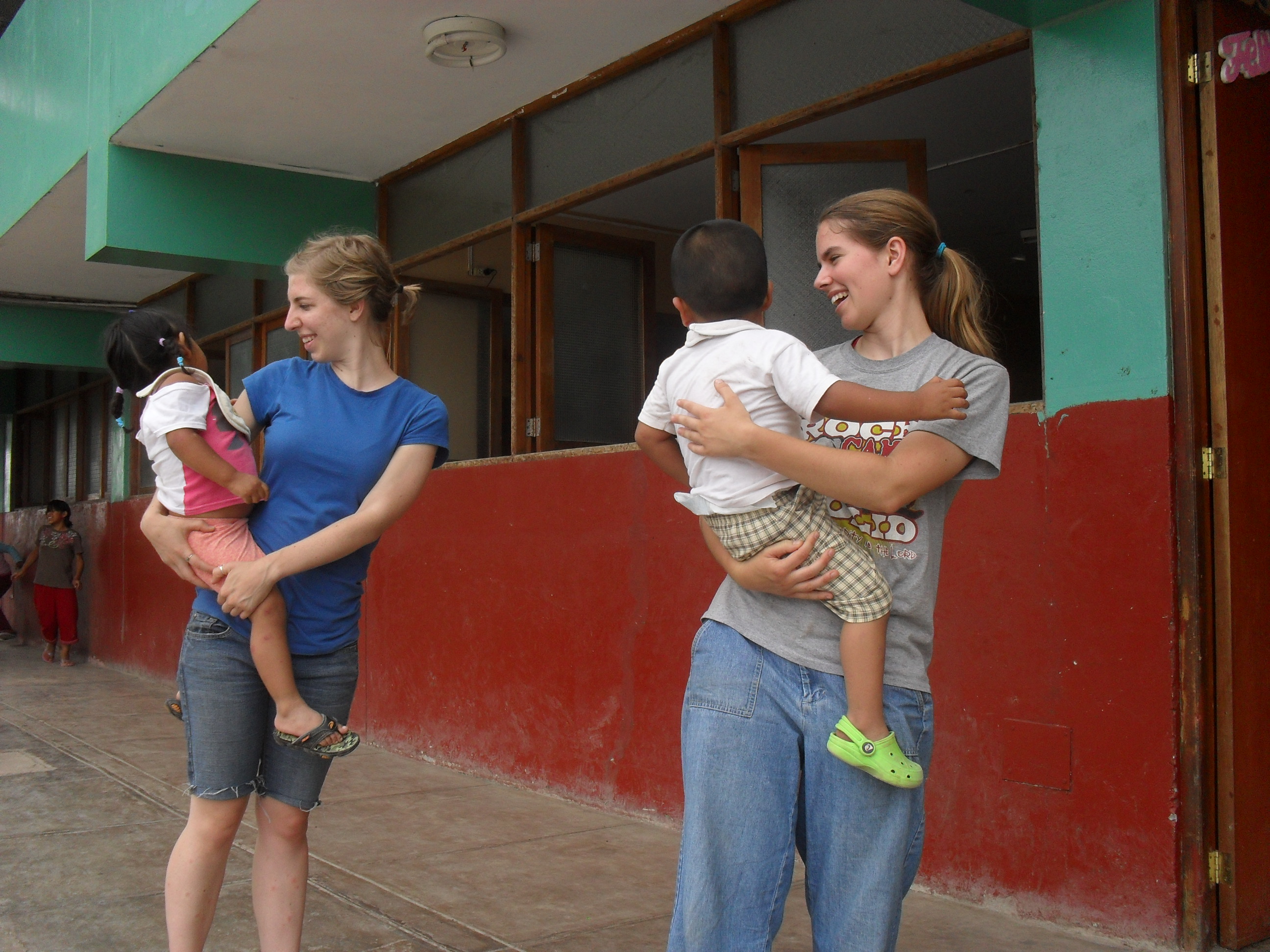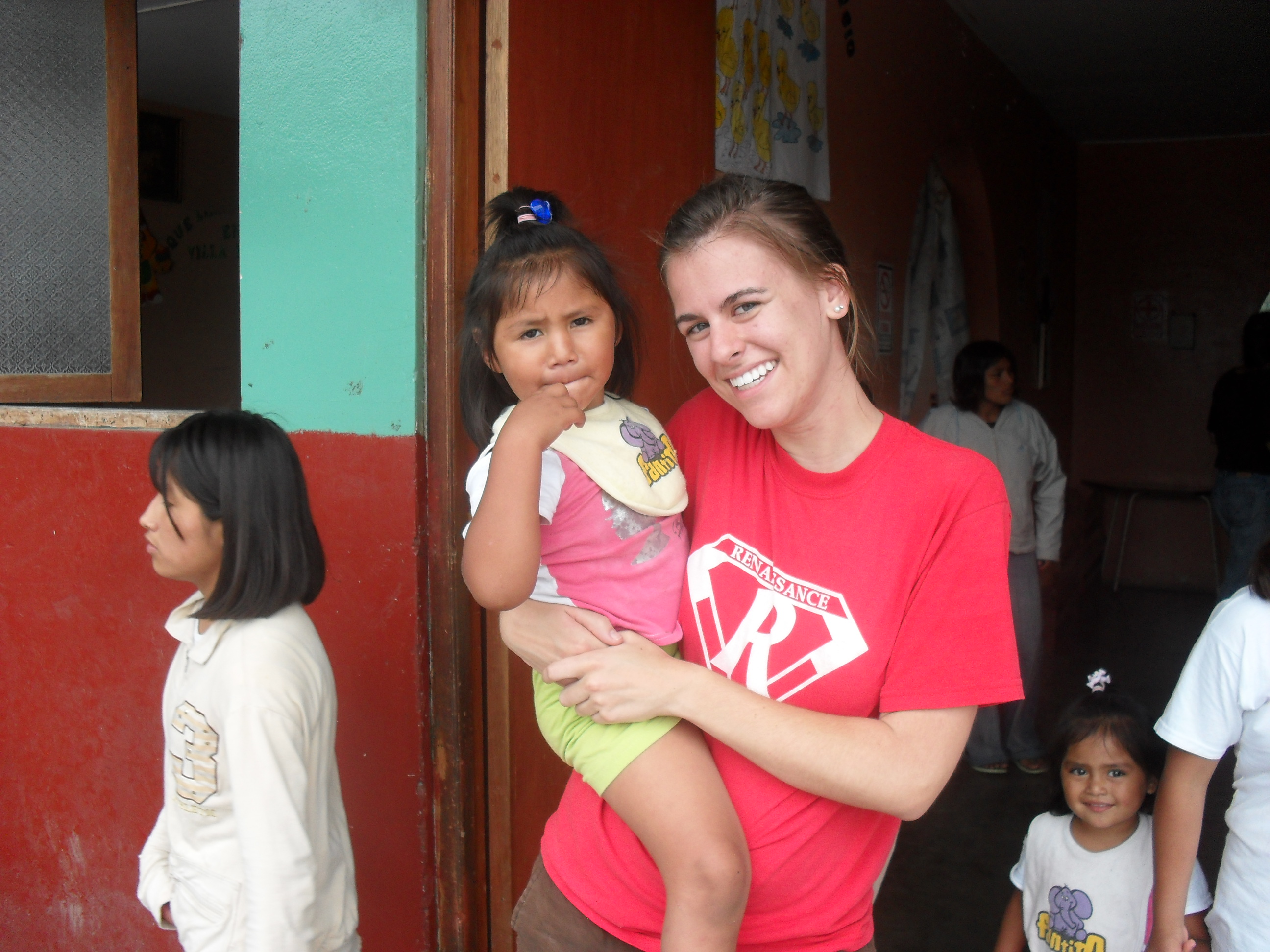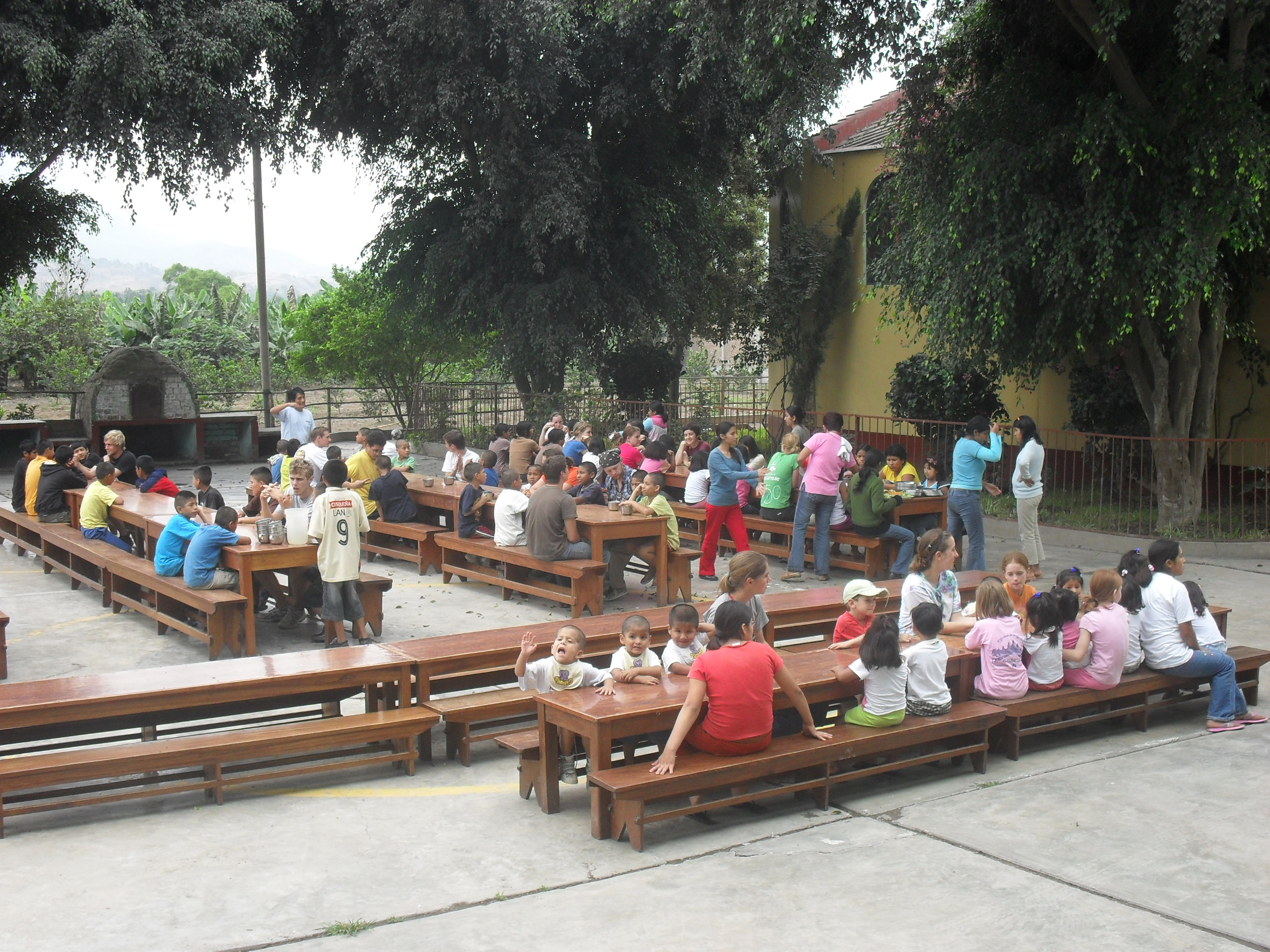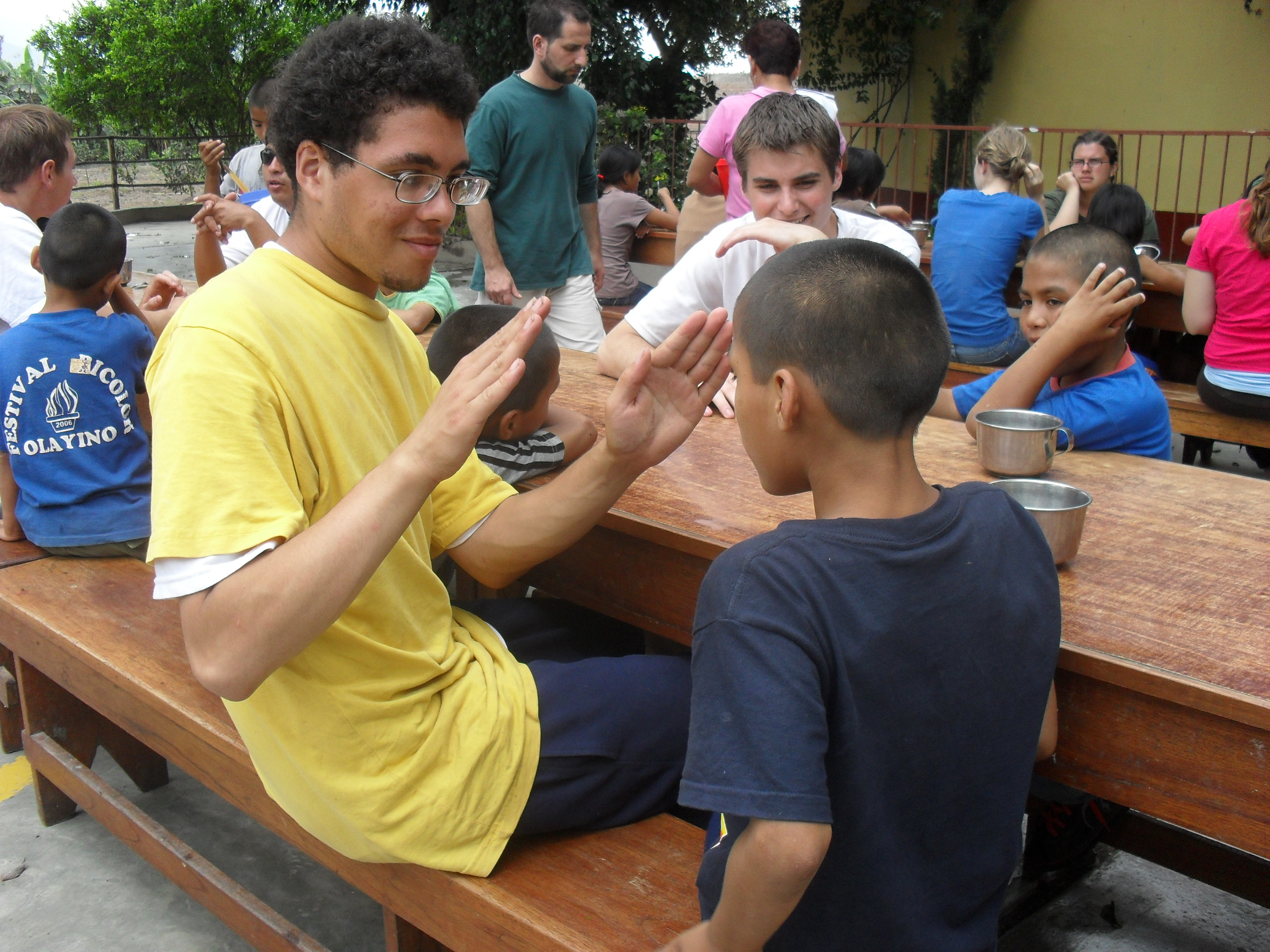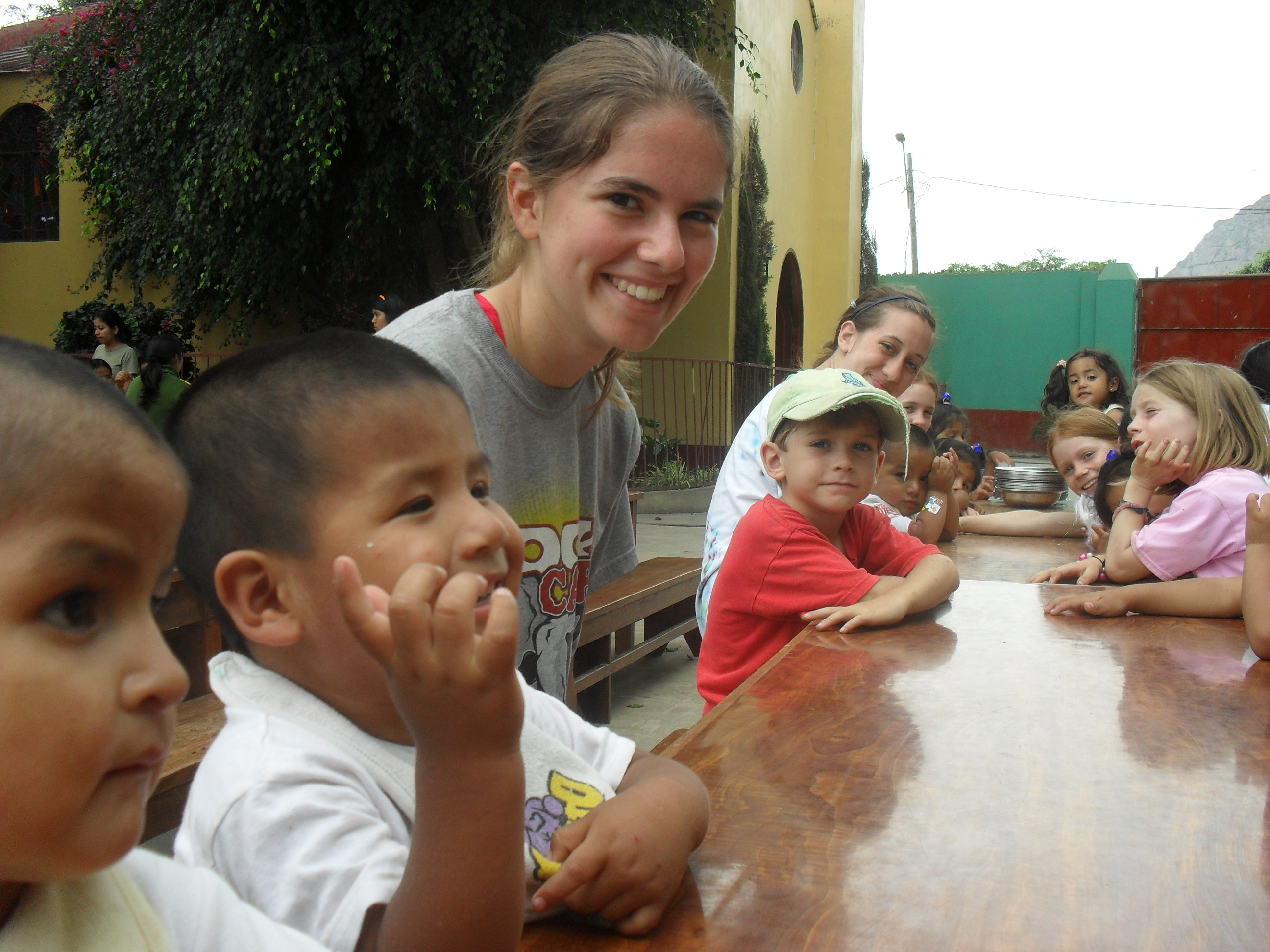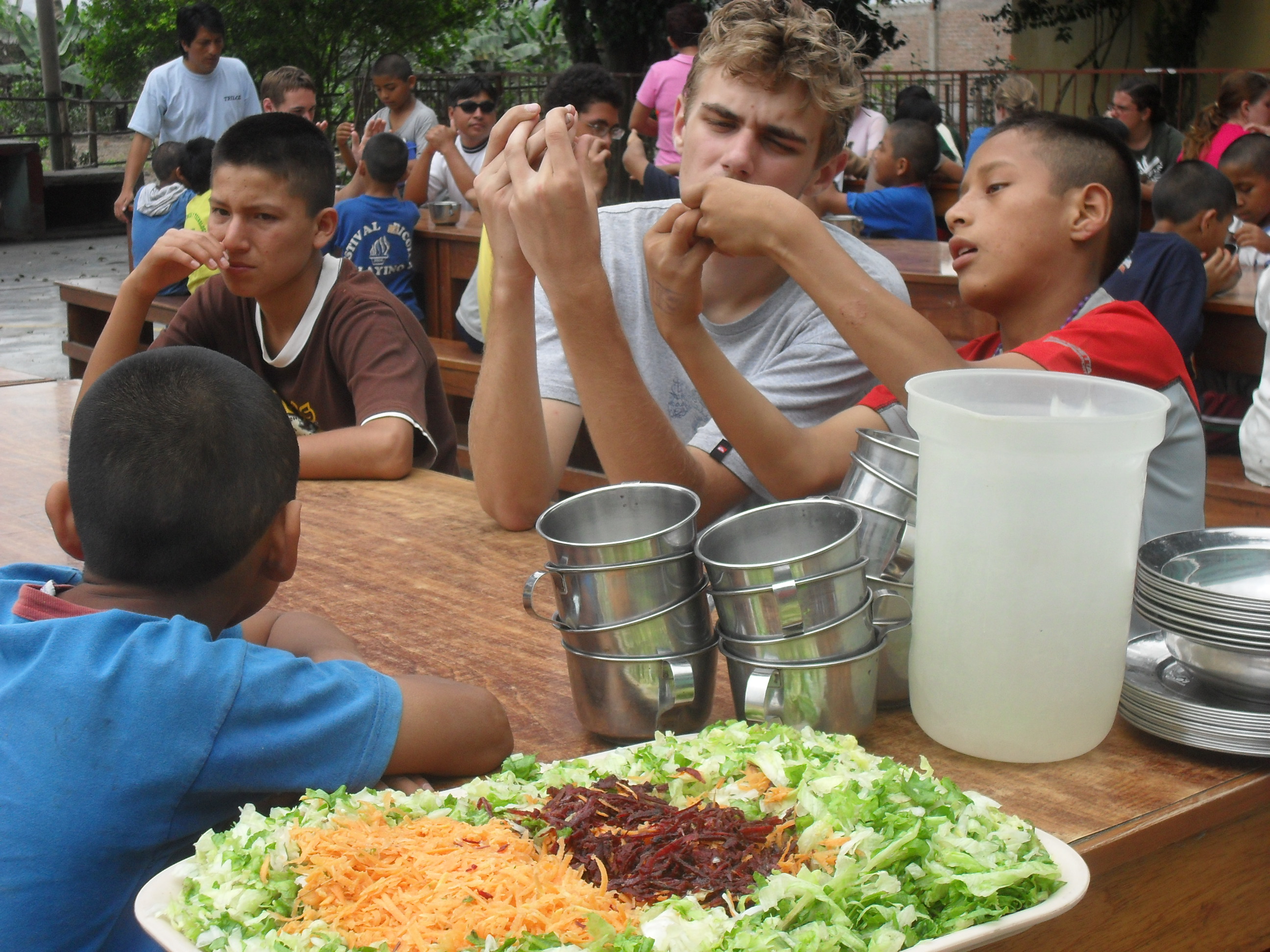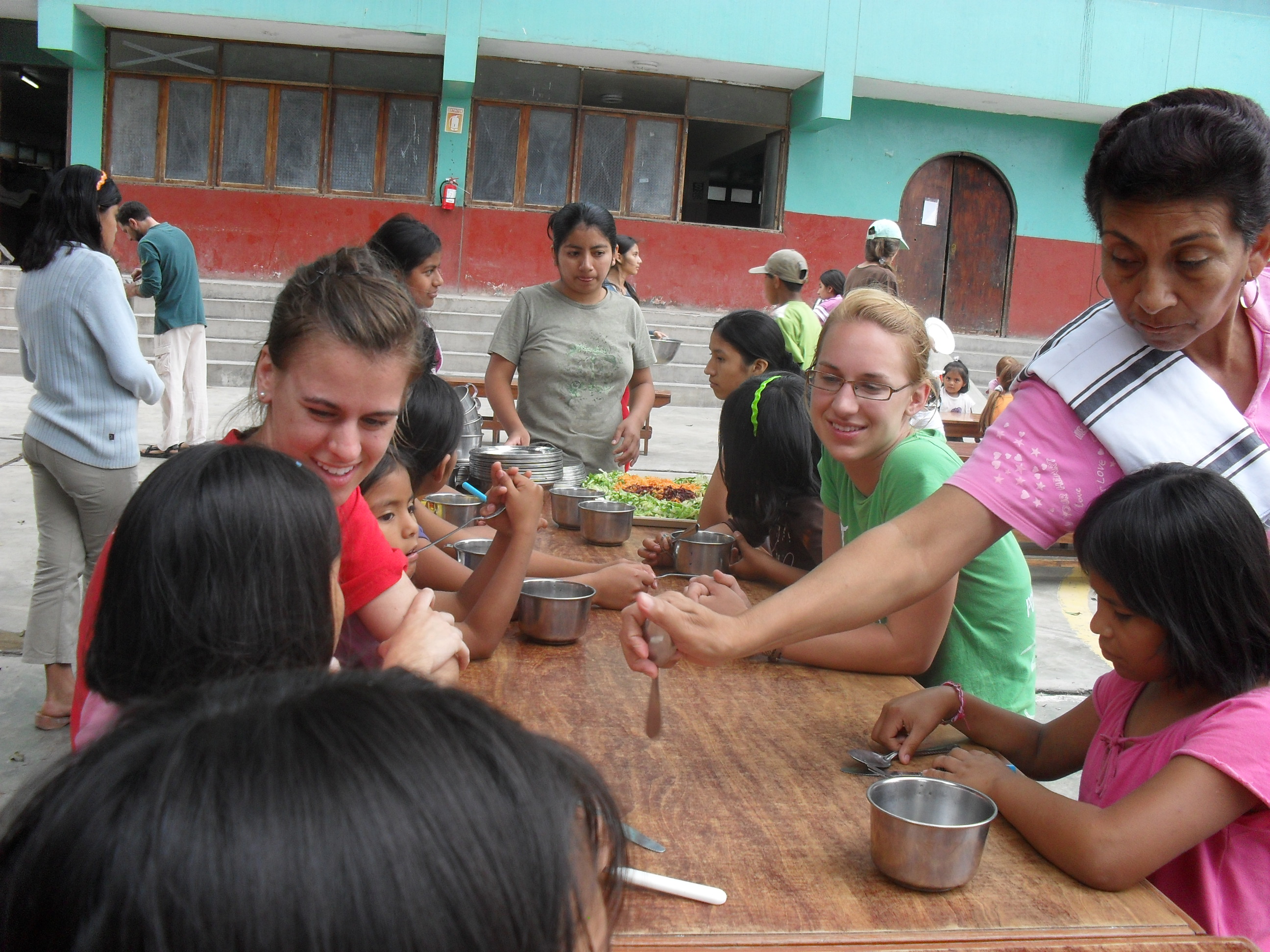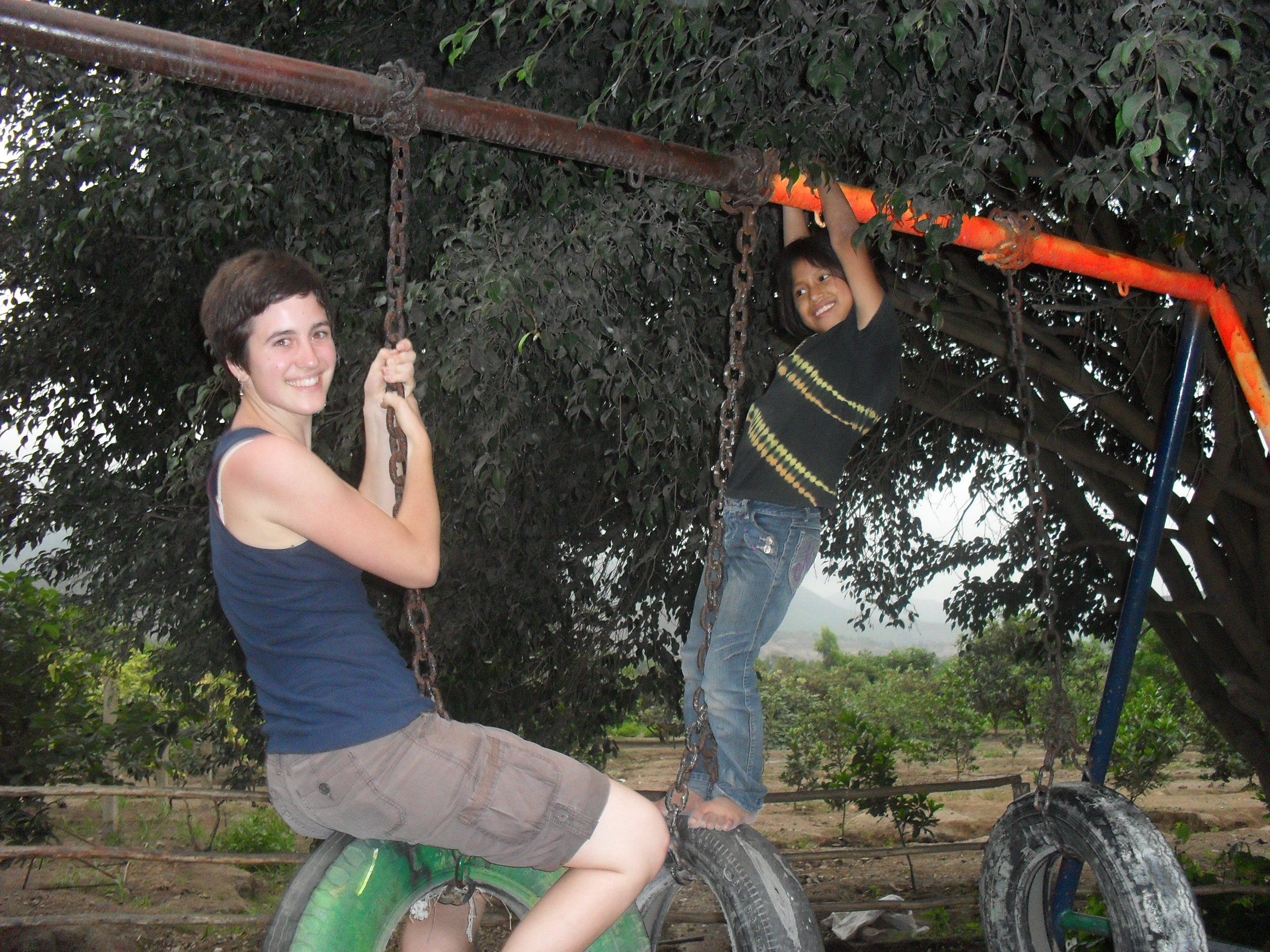Green Hills, Healthy Children
We traveled an hour south of Lima and found ourselves in another world. Before our adventure we asked the students two questions: (1) Are you ready for a hike? and (2) Have you ever spent the night in an orphanage?
The consensus? “Yes” to the first question. “No” to the second.
Quebrada Verde (Green Ravine) is a rare find just 20 miles south of the bustling metropolis. Residents of this hidden hamlet have worked with a local nonprofit group to protect the natural area known locally as Lomas de Lucumo (Lucumo Hills). We hit the trail eager to soak in the tranquil beauty and challenge our legs to some uphill action. We were not disappointed. Our guide, Alberto, led us to the top of the valley, pointing out its natural features and telling us its history. We saw snails and stick bugs, as promised, and a variety of wildflowers. Then we came upon something unexpected, pictographs painted on the rock surfaces by the ravine’s first inhabitants. Archaeologists believe that the strange figures left by these prehistoric people represent animals, or perhaps mythical creatures.
There was nothing mythical, however, about our next stop. After our time in the verdant hills we traveled across the valley to Santa Martha Children’s Home, an orphanage started 13 years ago to provide a safe place for abused and neglected children. We were greeted by the open arms of two-year-old toddlers and the expectant looks of curious teens.
We spent the evening and the following day with the children. Some played volleyball. Others worked in the garden. Some hung out in the nursery. Each found their own way to relate to the children who were drawn to them, children eager for contact with someone from the other side of the world.
This semester we are focused on understanding the socioeconomic realities caused by rapid urban migration and widespread poverty here in Peru. We have heard lectures on the causes of poverty and its consequences for those living on the margins. And we are traveling to neighborhoods in and around Lima in search of solutions. Our visit to Santa Martha gave us a chance to experience first hand one way a local catholic family has found to help heal the pain and break the cycle of domestic violence.
And, thanks to a generous donation of talent and time by some friends at Waterford Mennonite Church in Goshen, we arrived at Santa Martha with 115 hand-sewn, draw-string bags. An anonymous gift from another donor made it possible to fill each bag with school supplies — notebooks, crayons, scissors, glue and other essentials. The children will have a chance to make good use of these when school begins in March.
Both projects — the Lomas de Lucumo ecological reserve and the Santha Martha Children’s Home — offer healing and hope to a hurting world. The first is secular, the second religious. The first offers a place to refresh the soul, escaping for a time the daily grind of life in a city that is bursting at the seams. The second offers a lasting opportunity for children who lack a nurturing home to develop their bodies, brains and hearts in a safe environment.
God is good.
